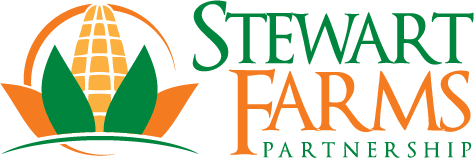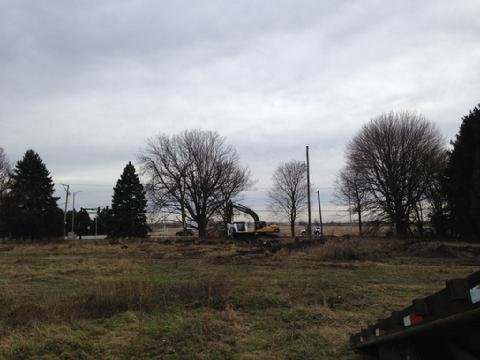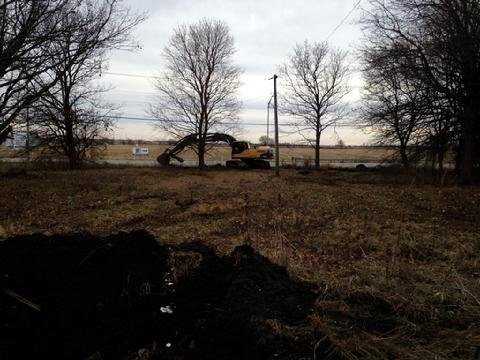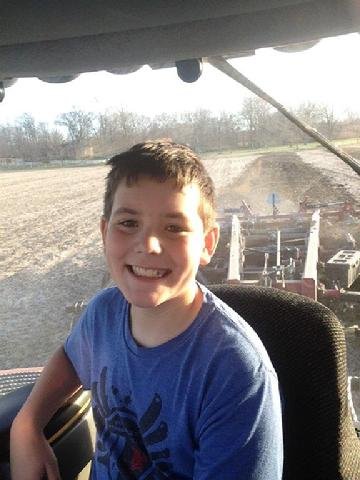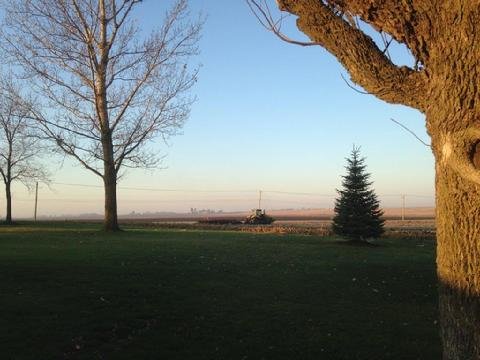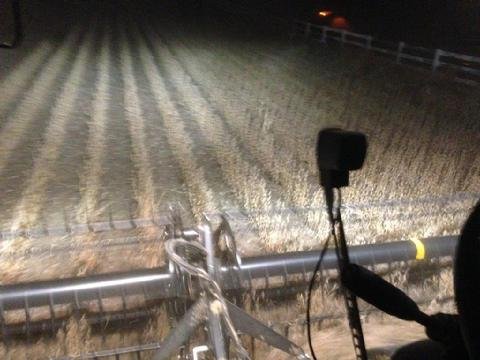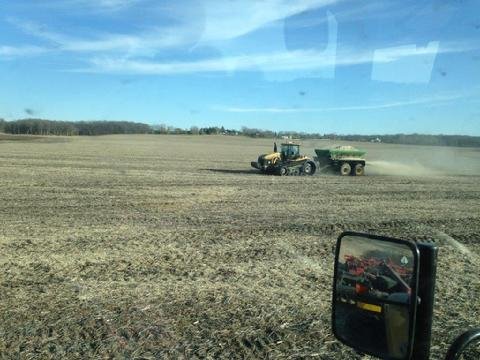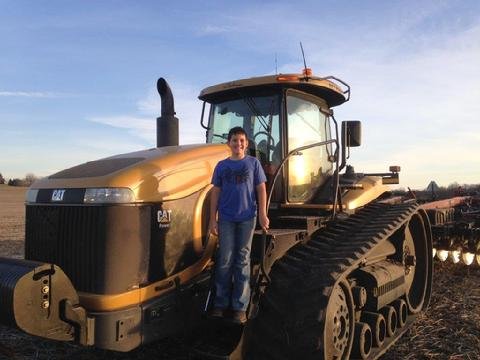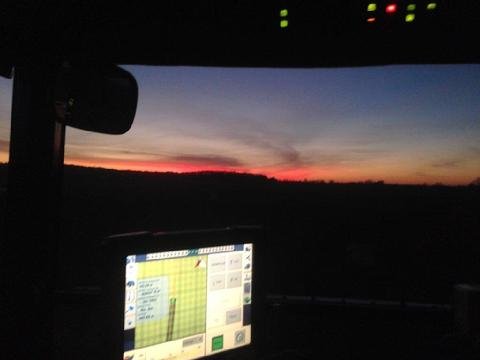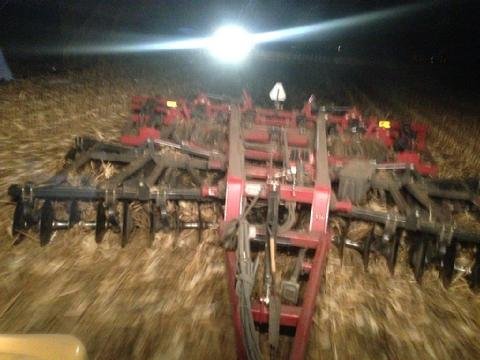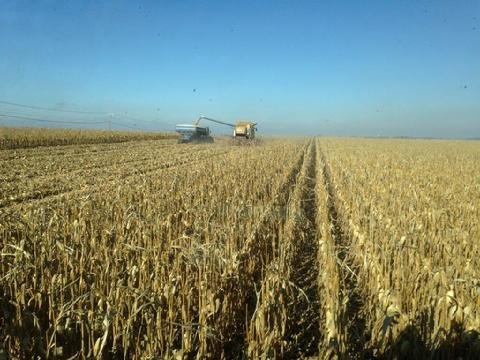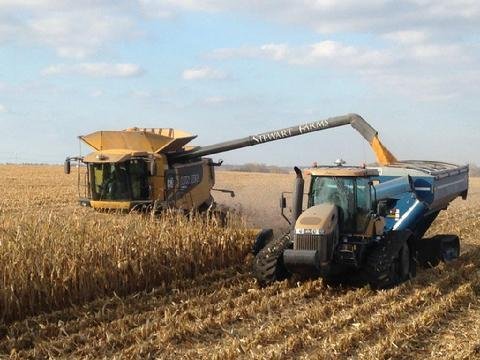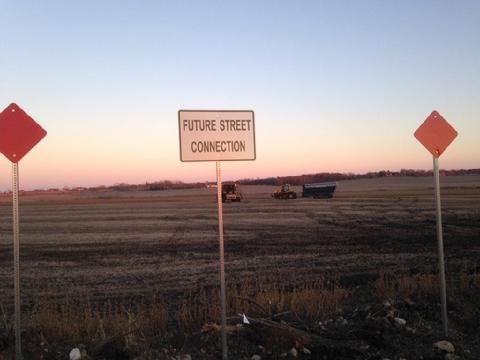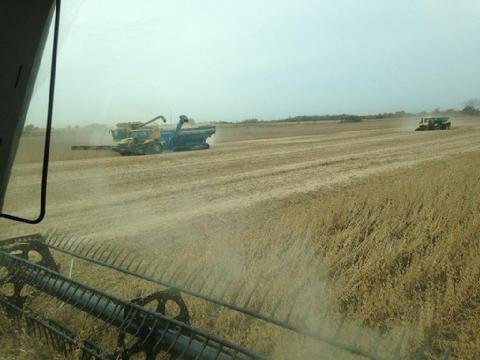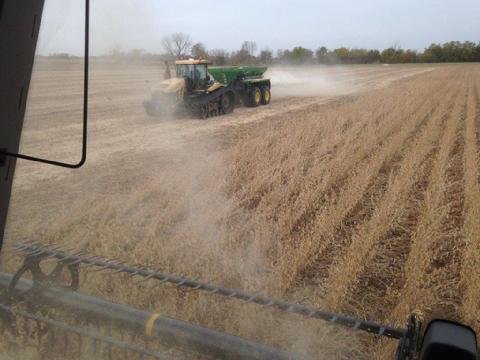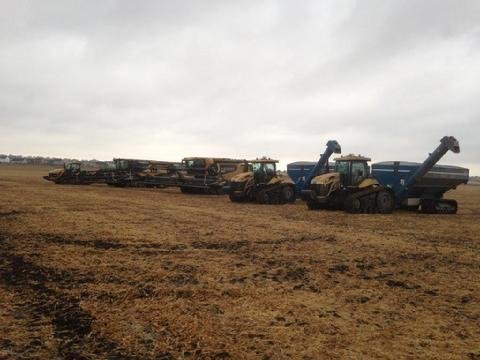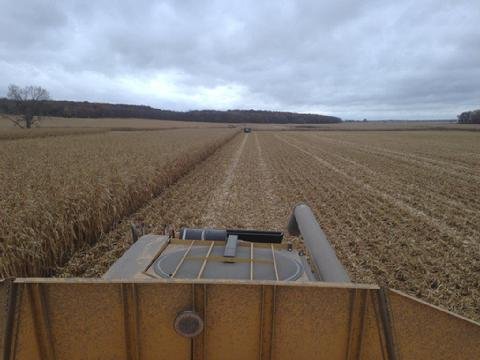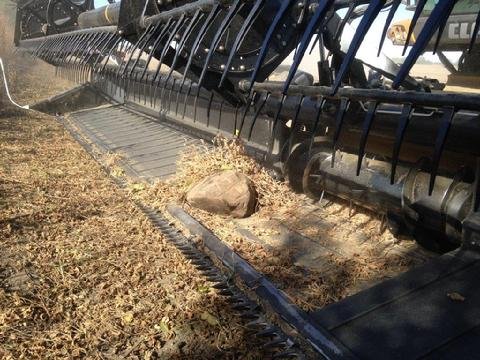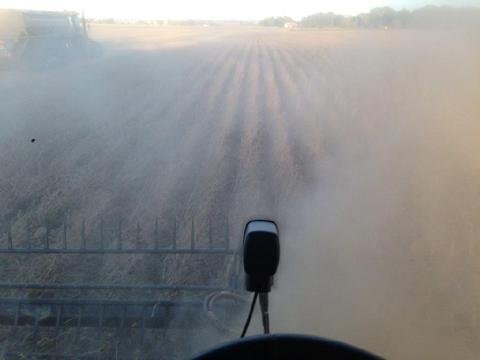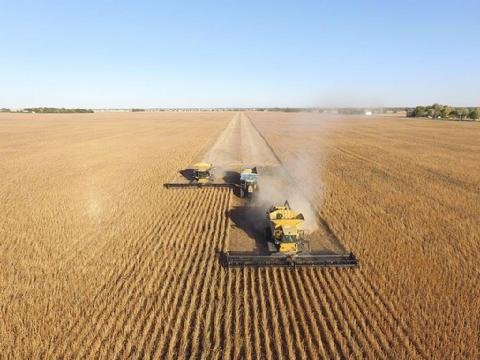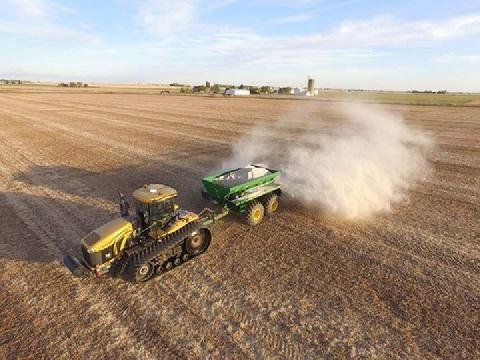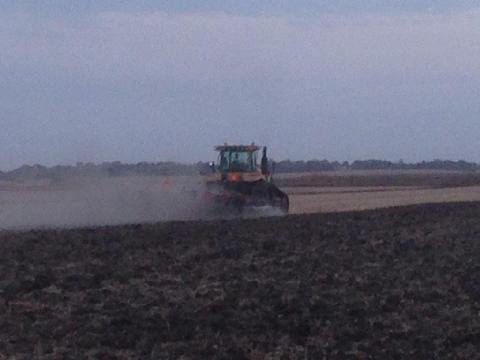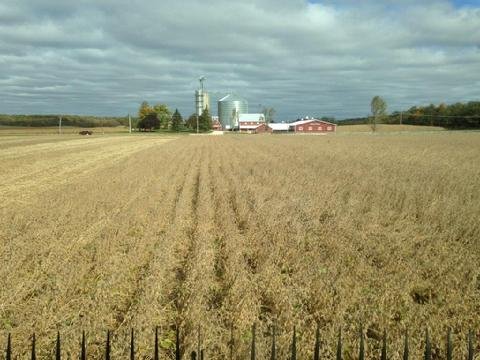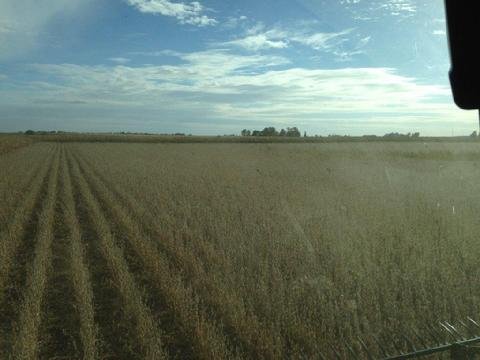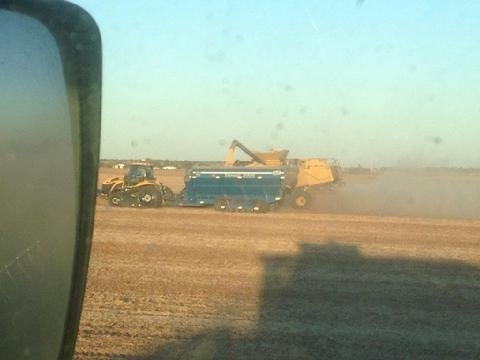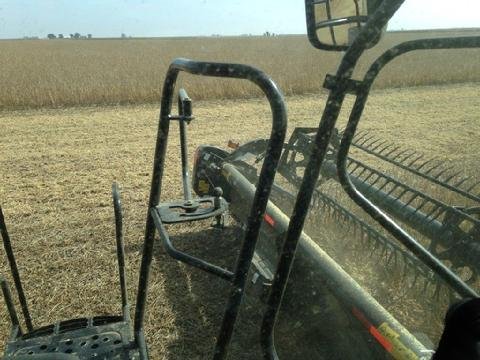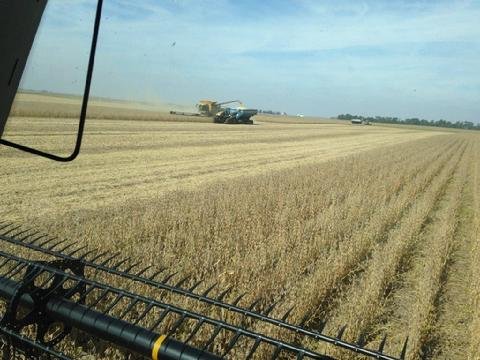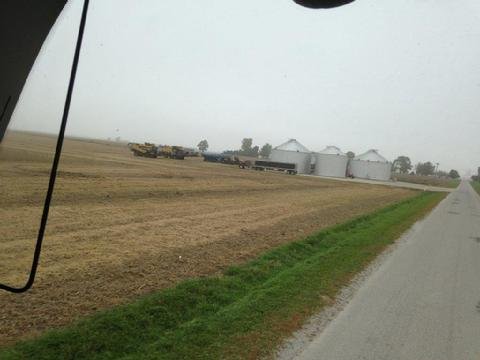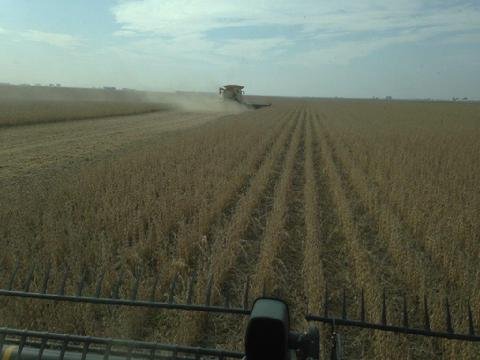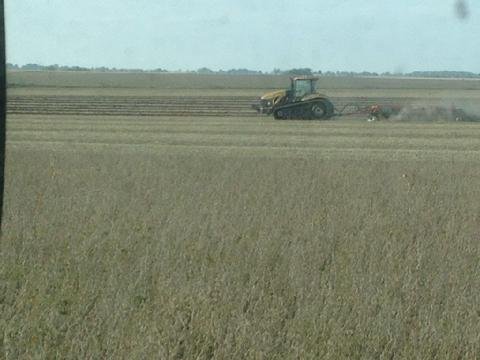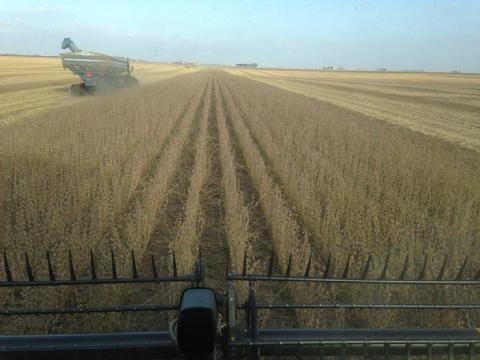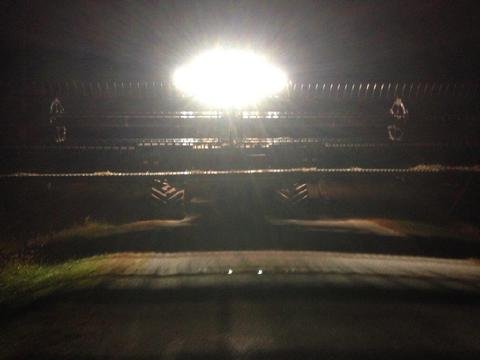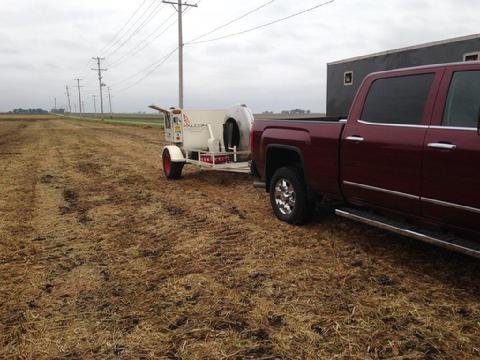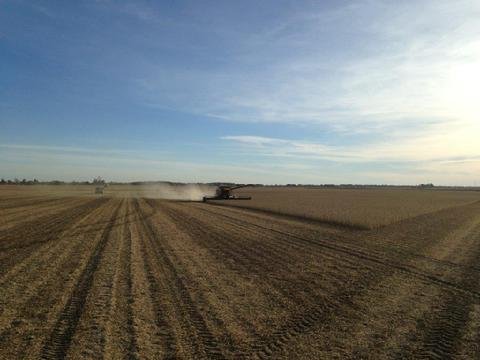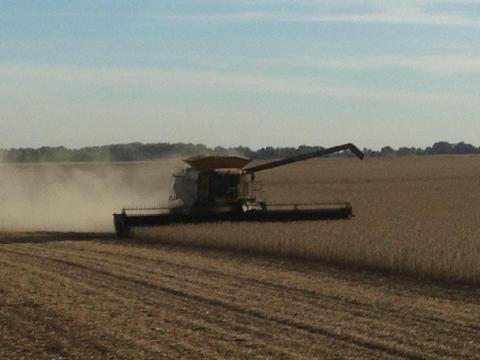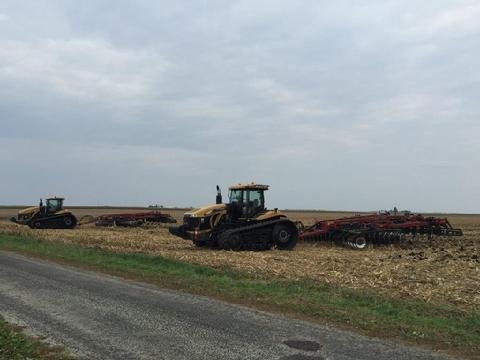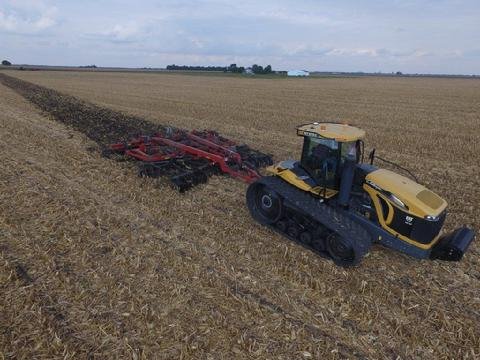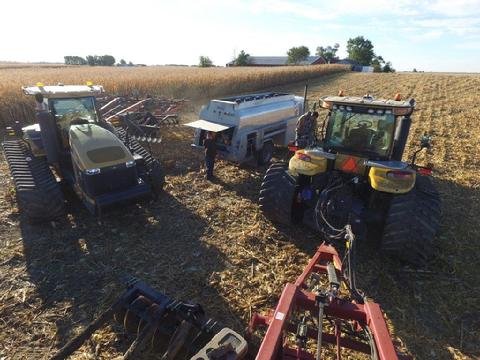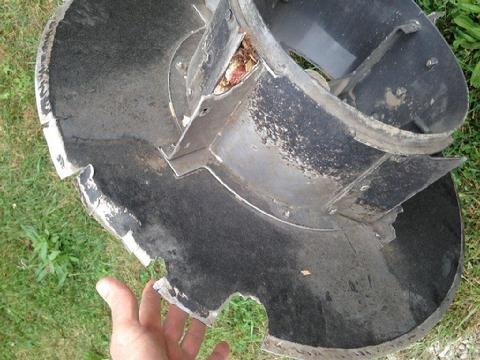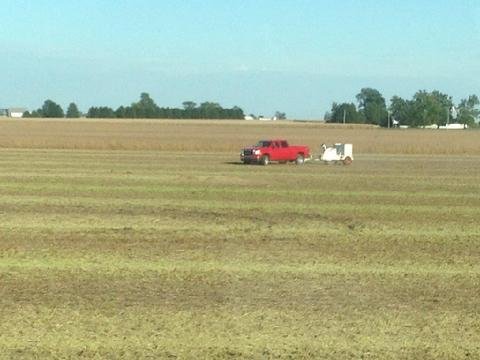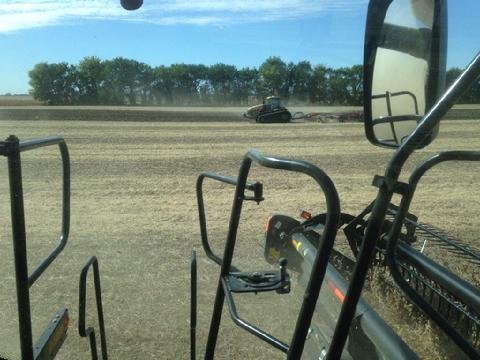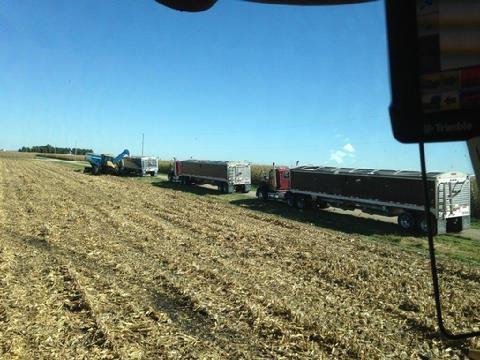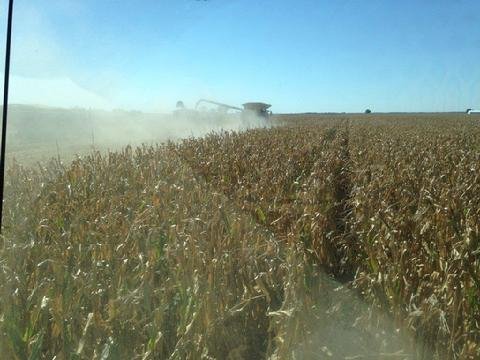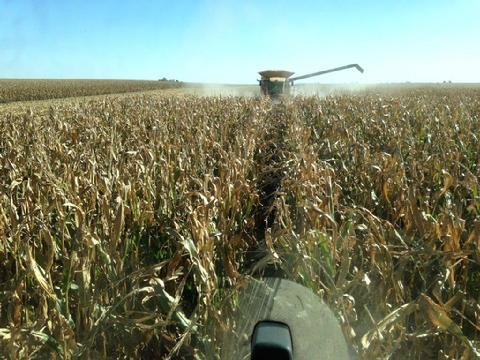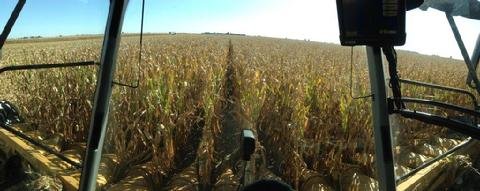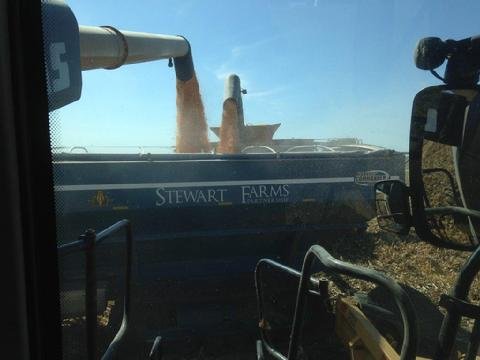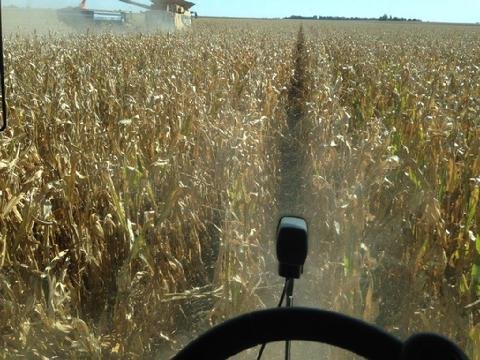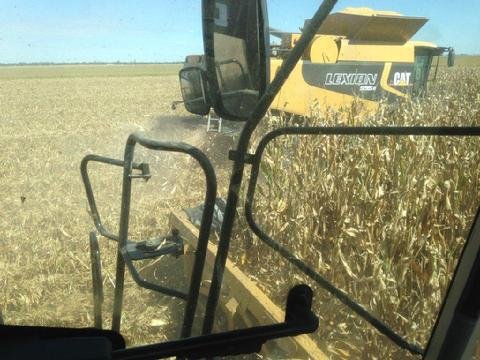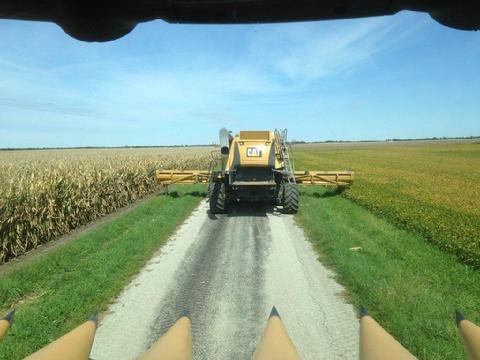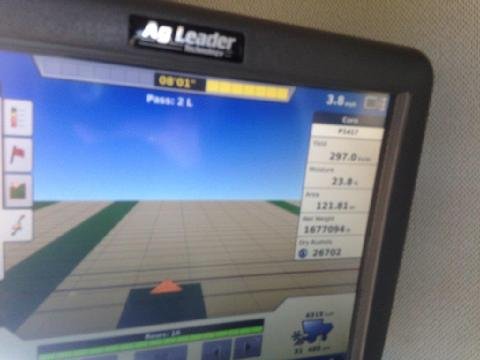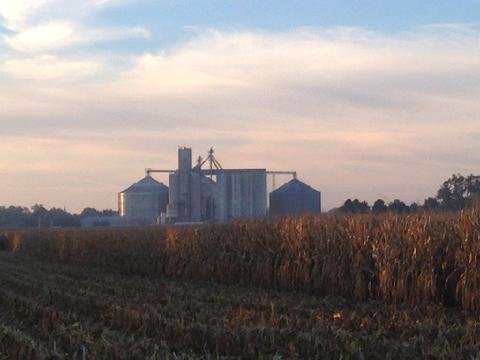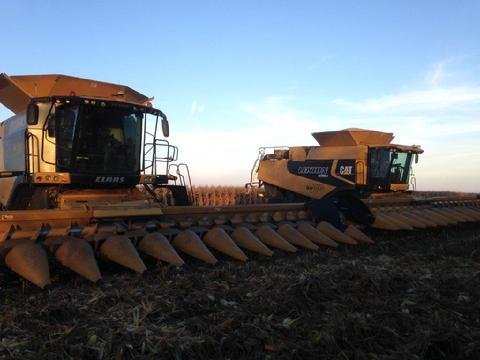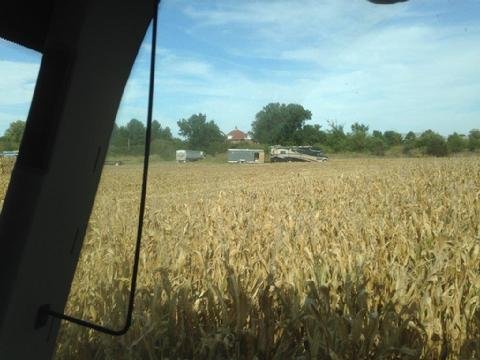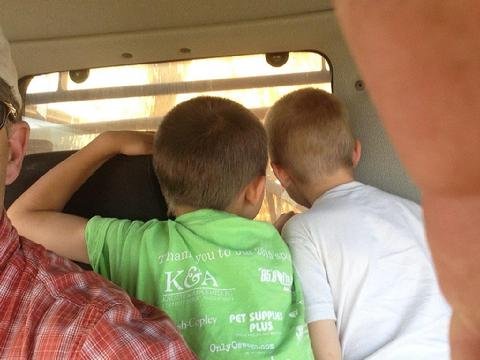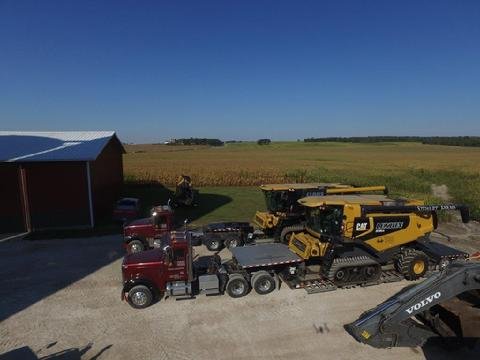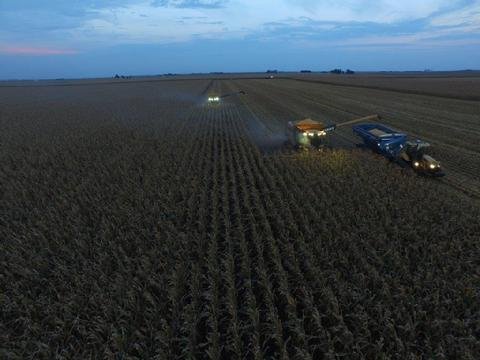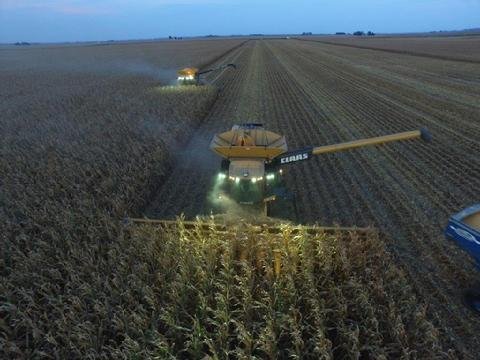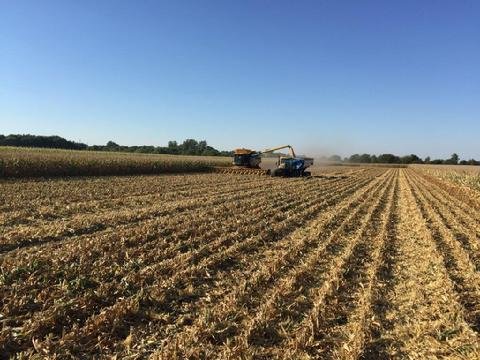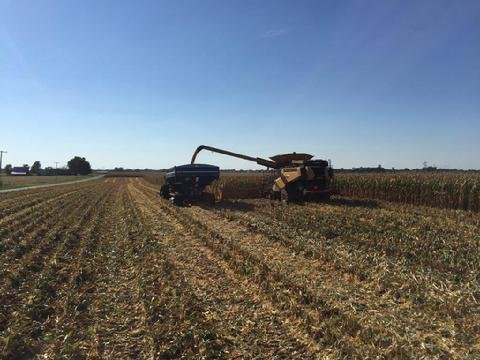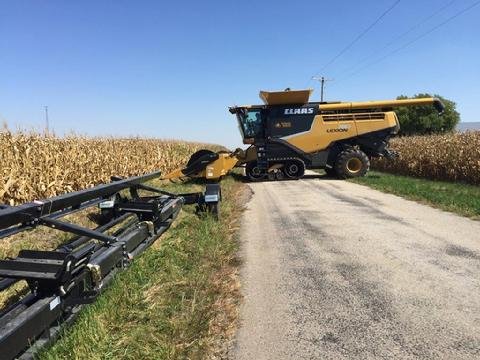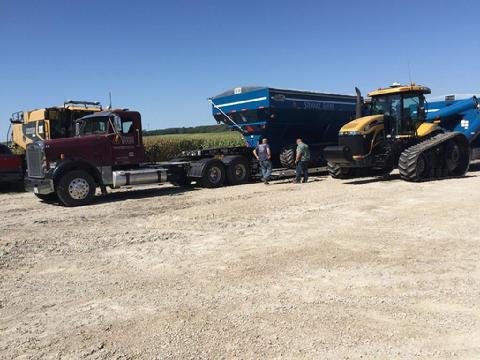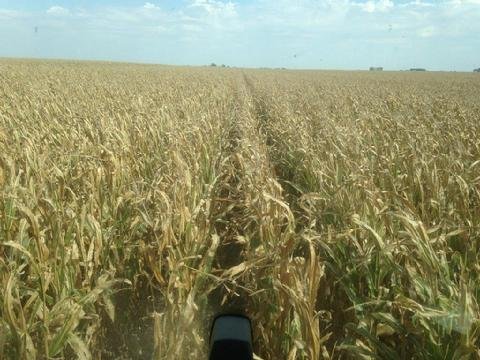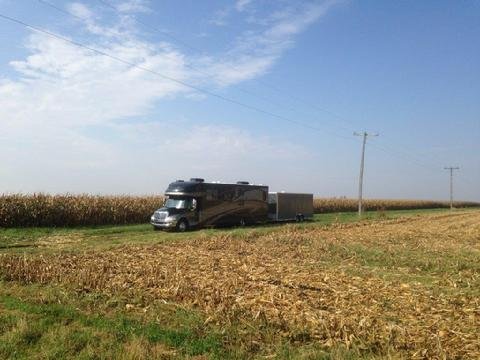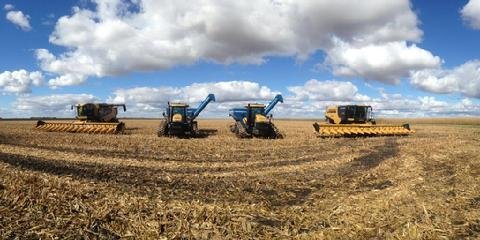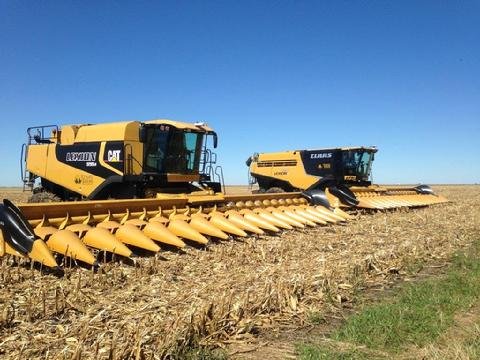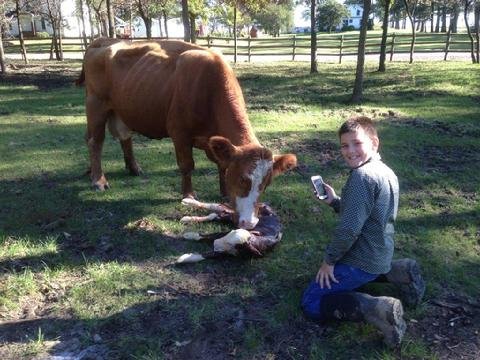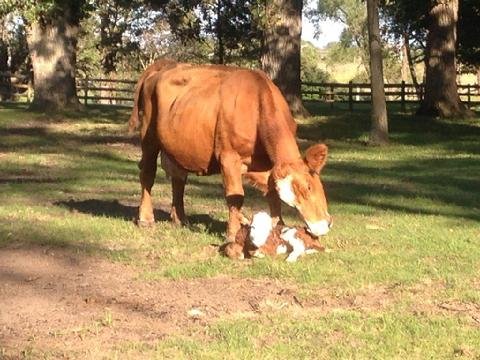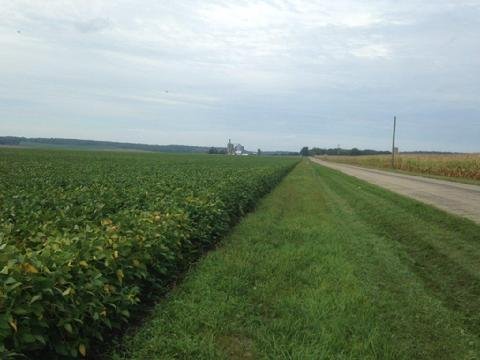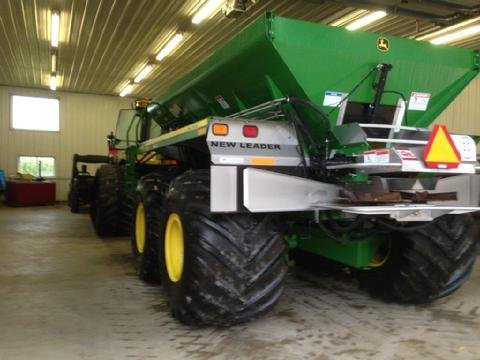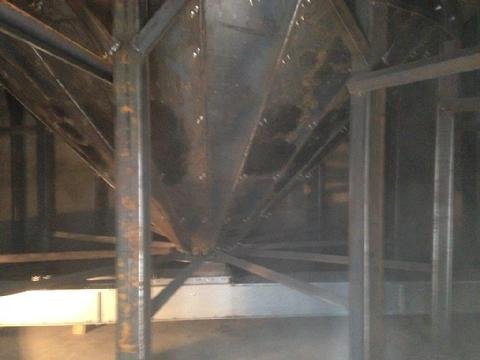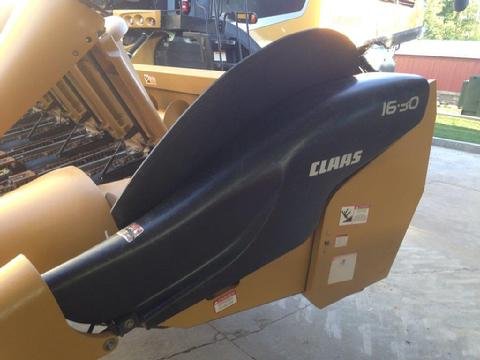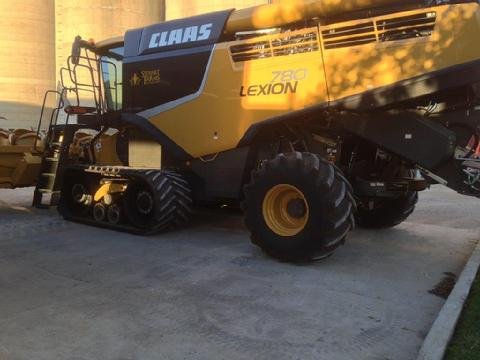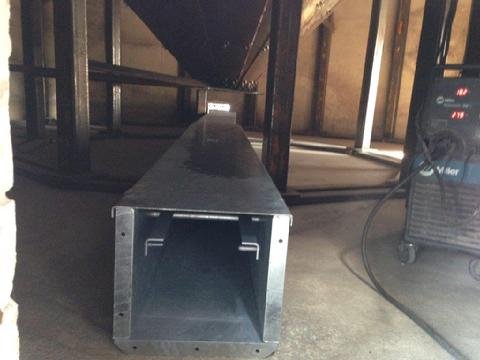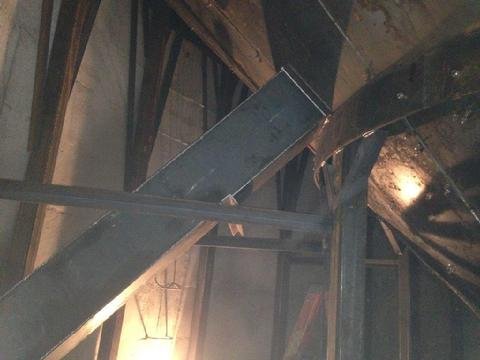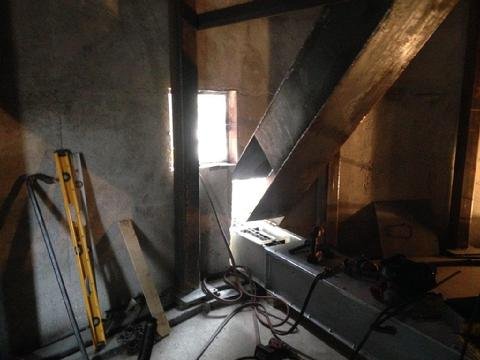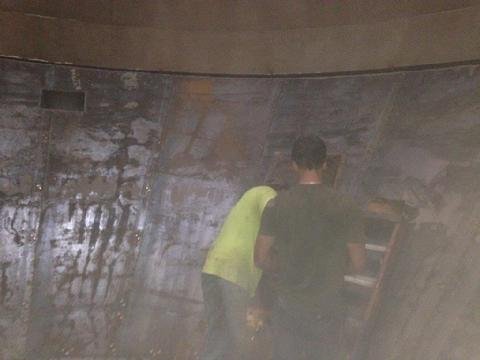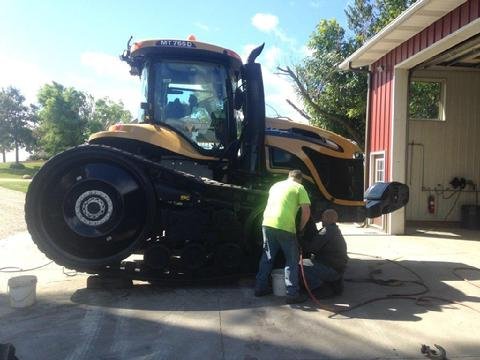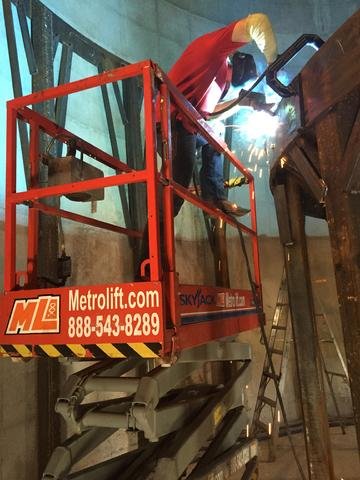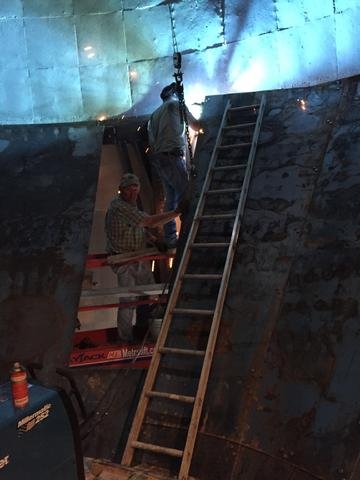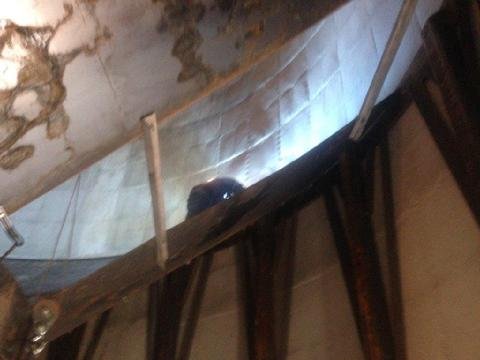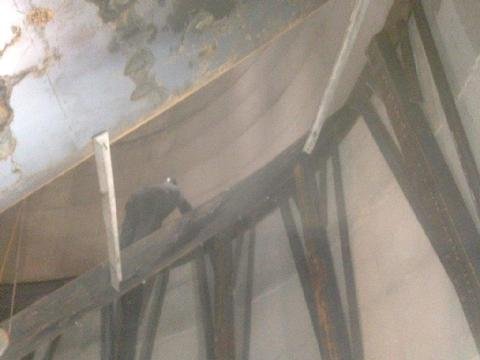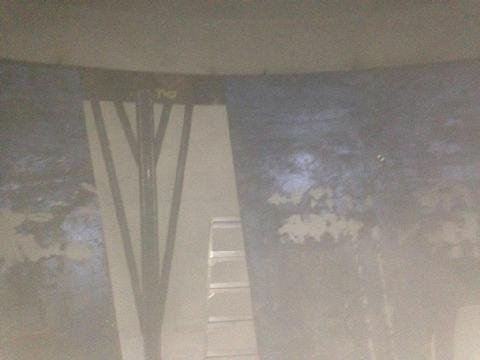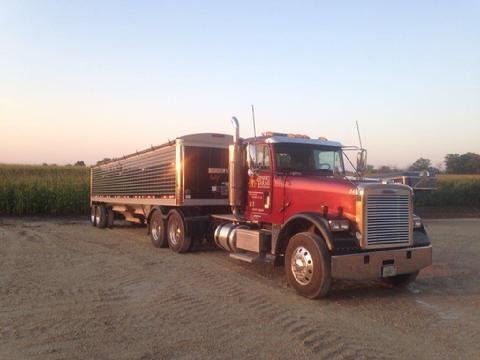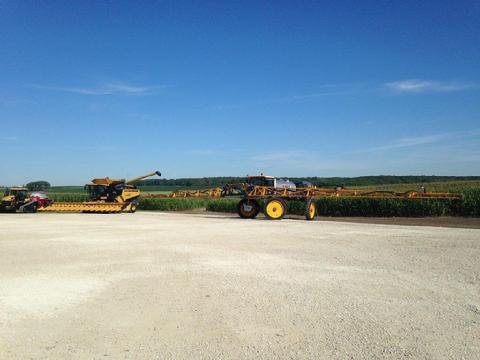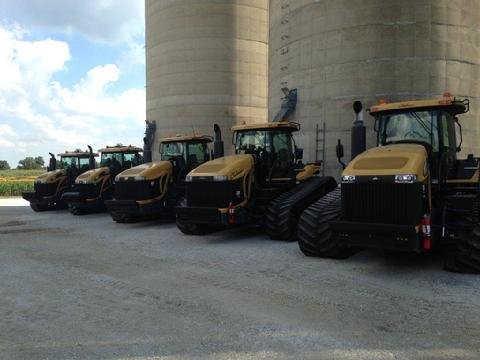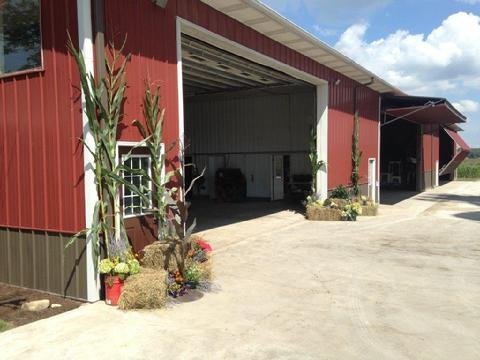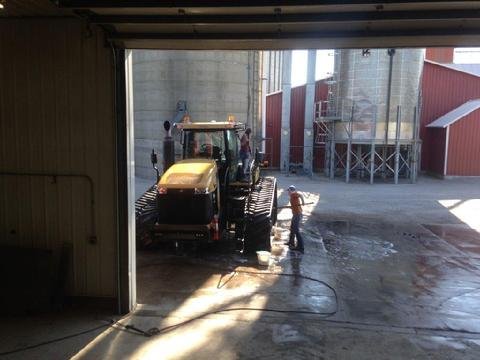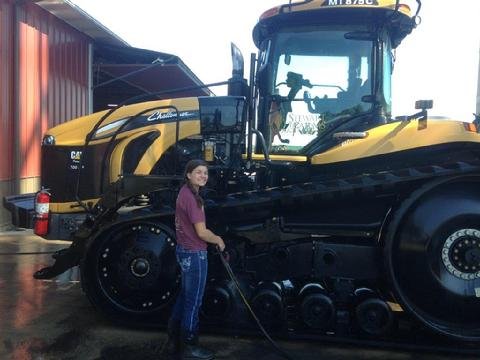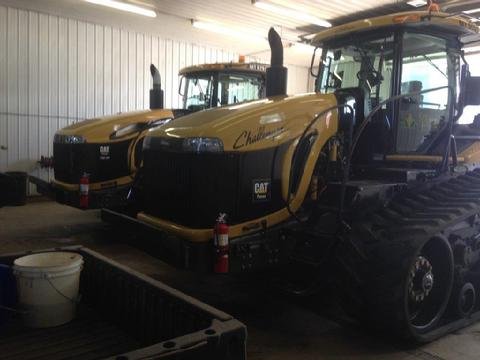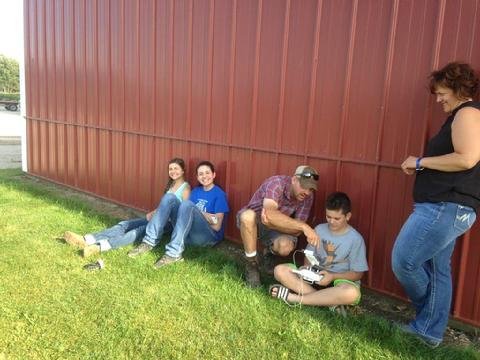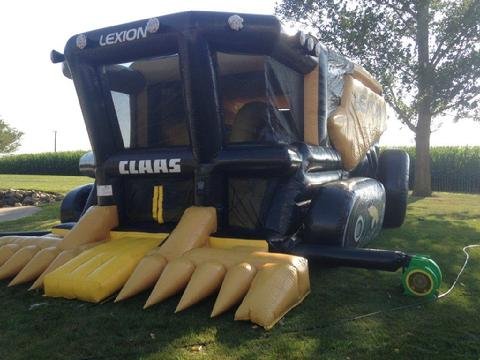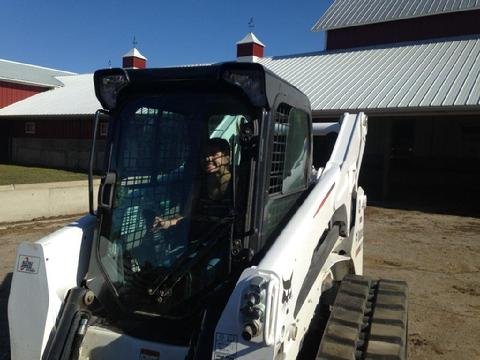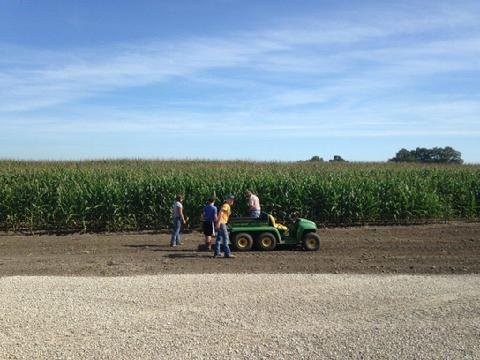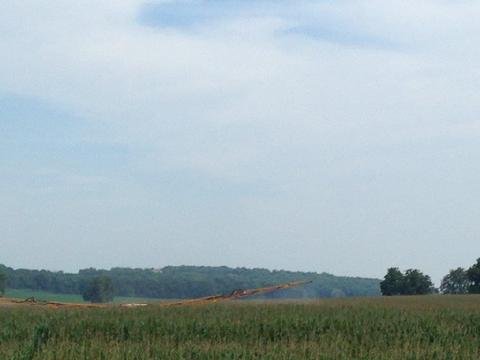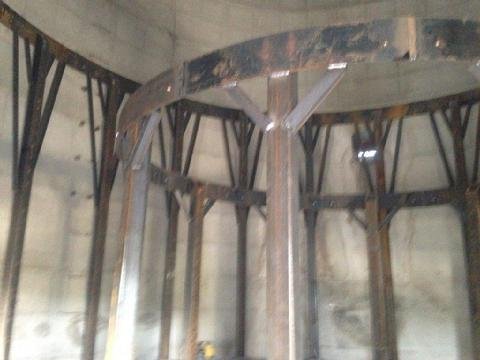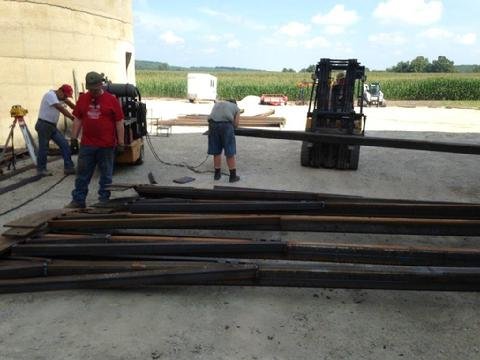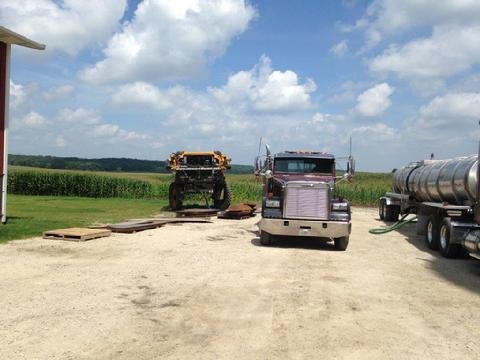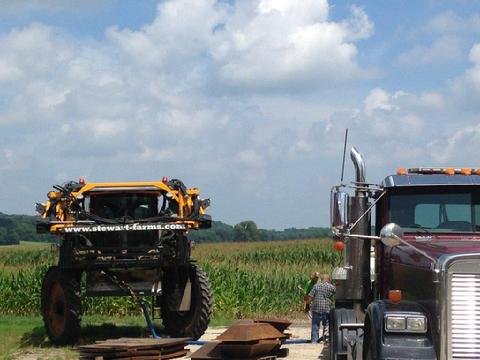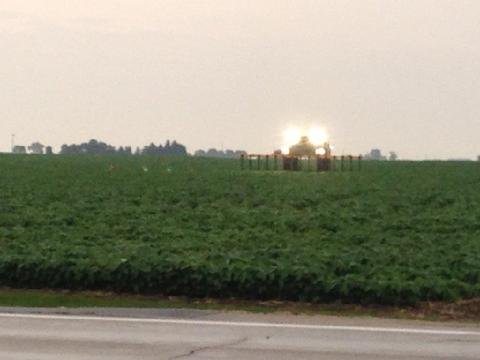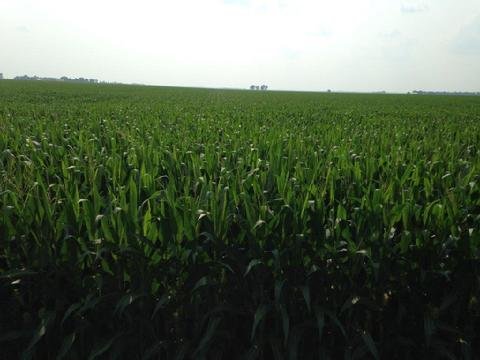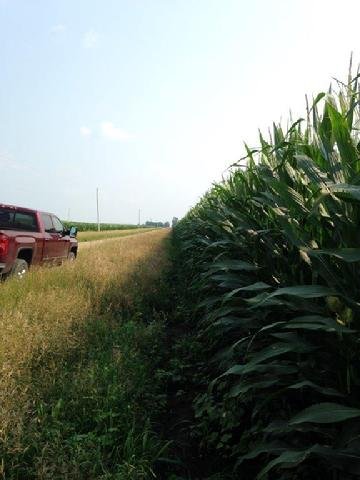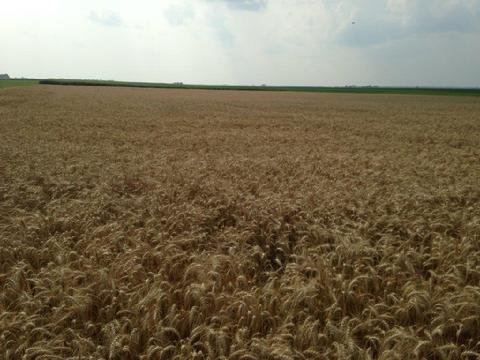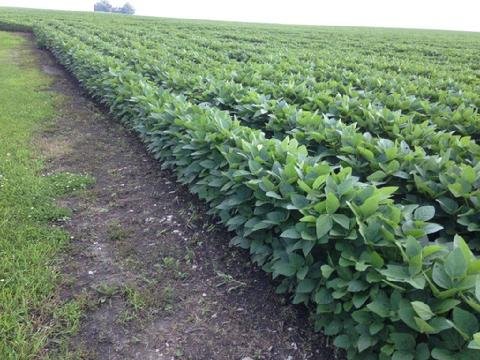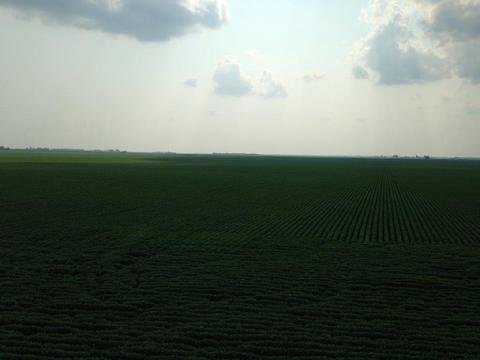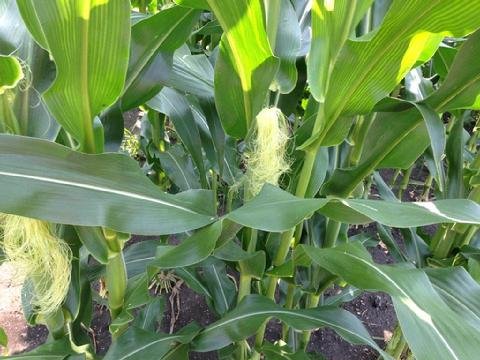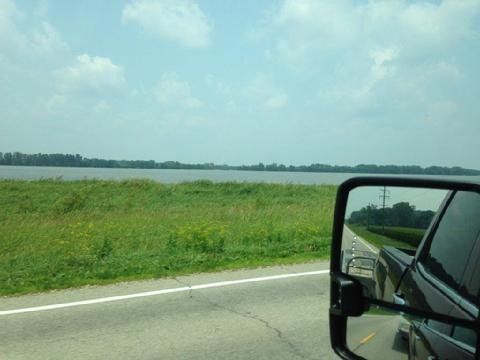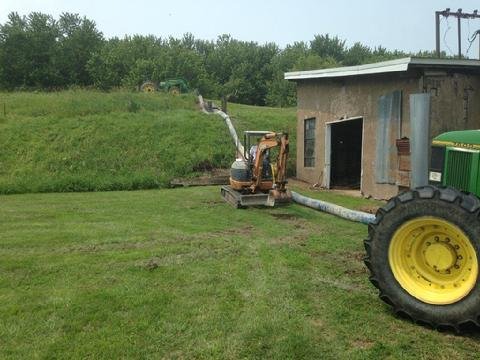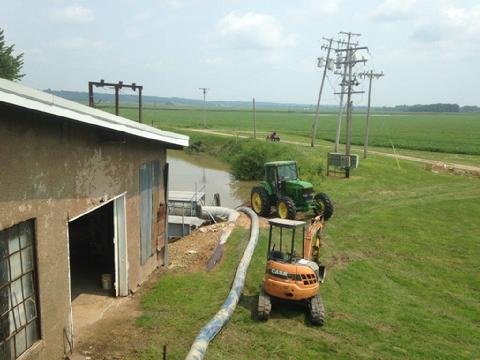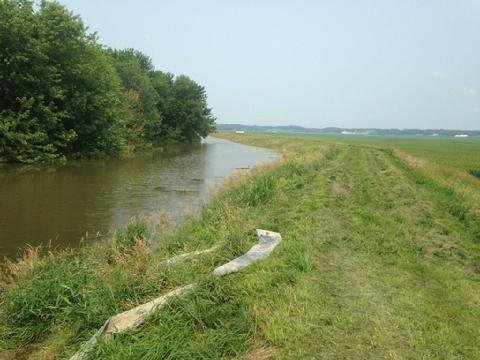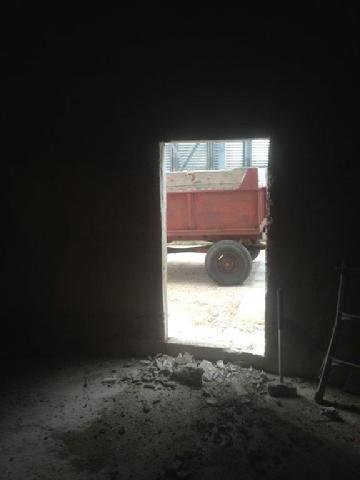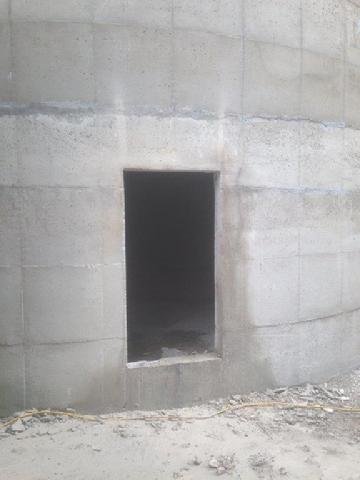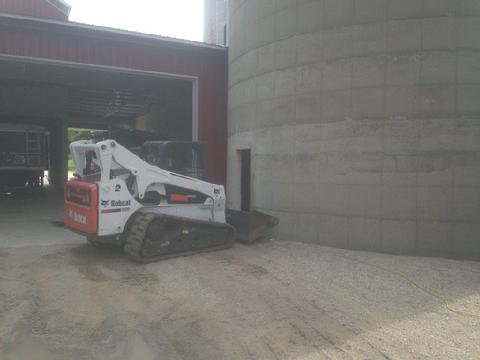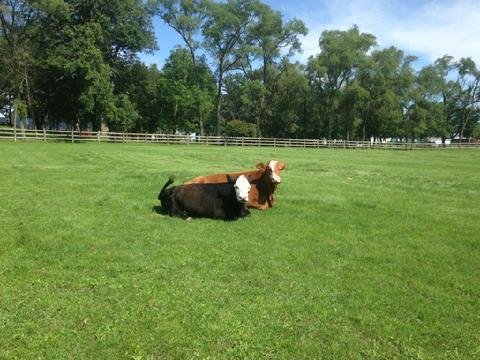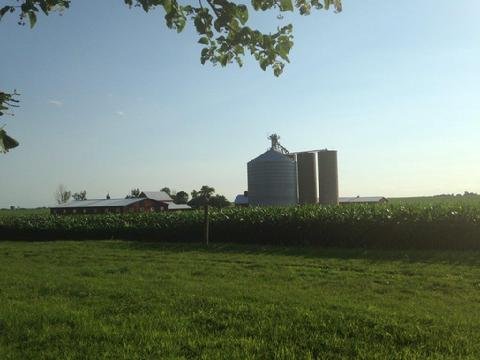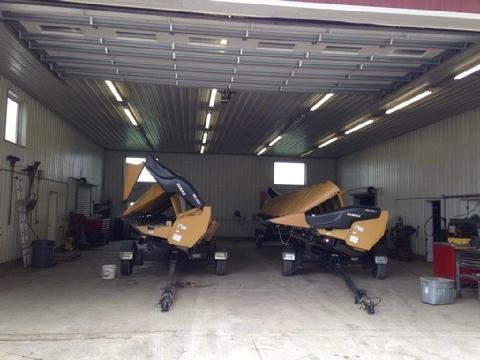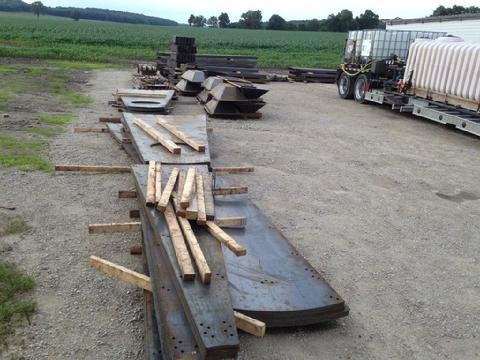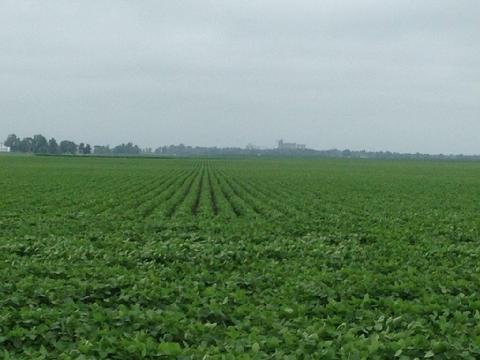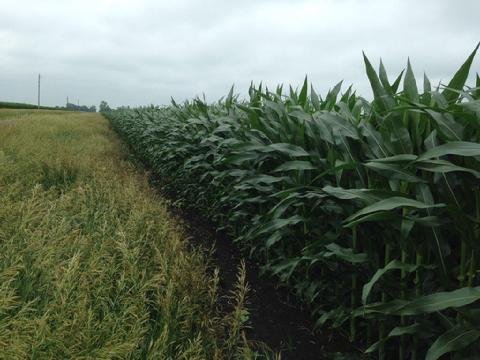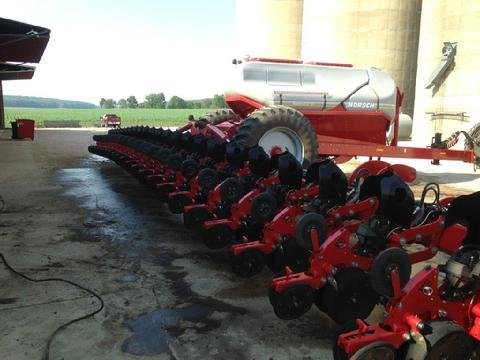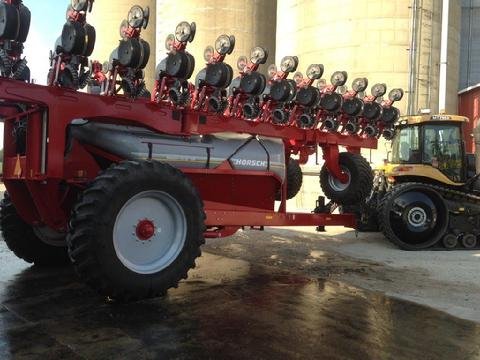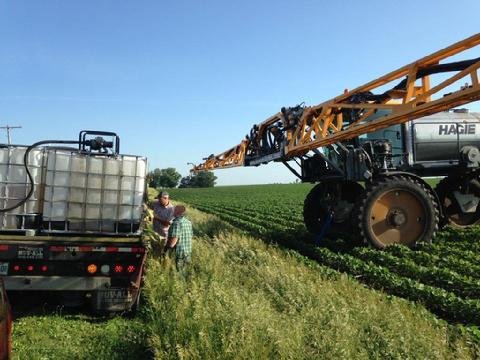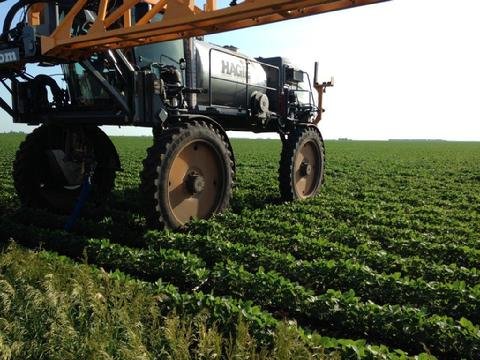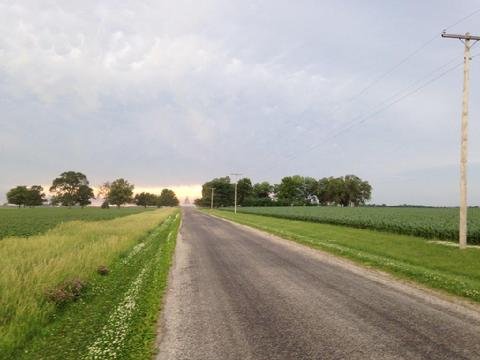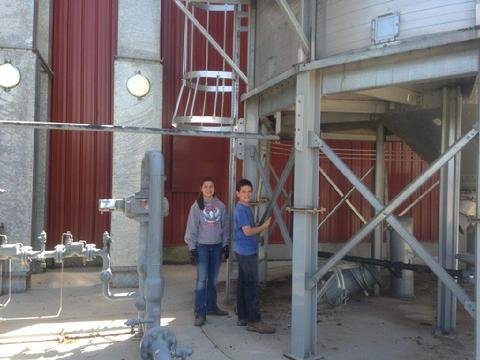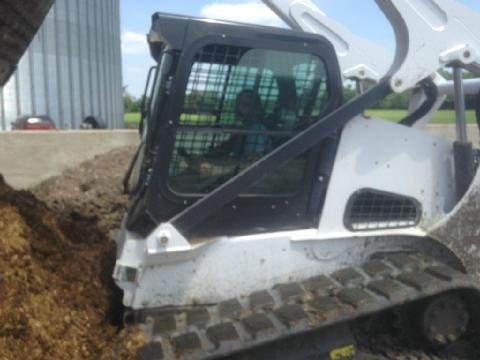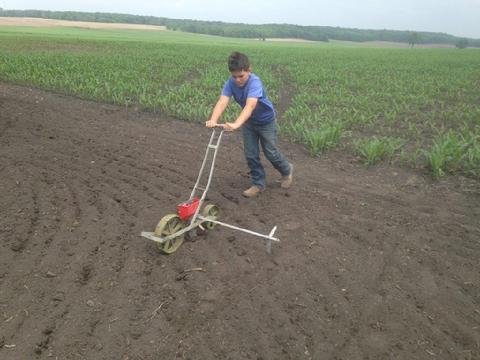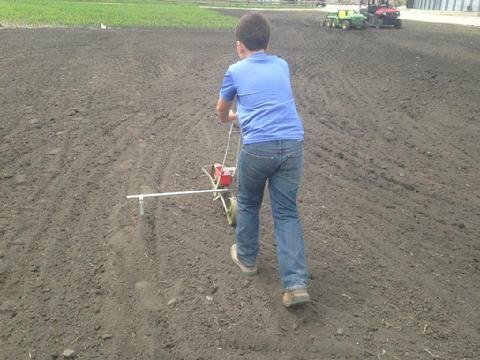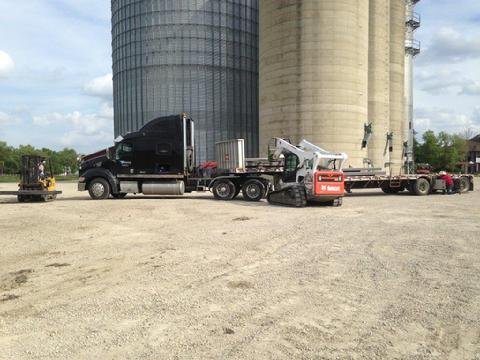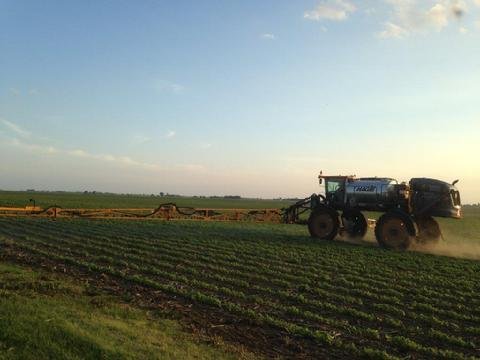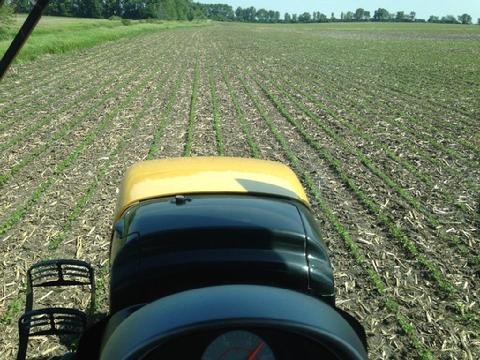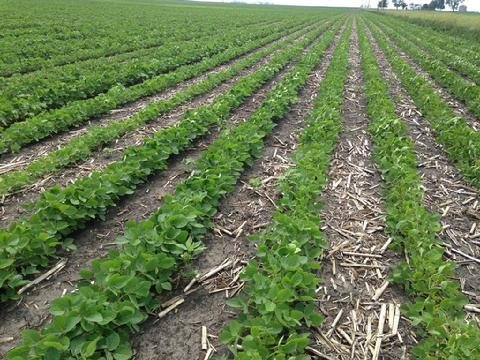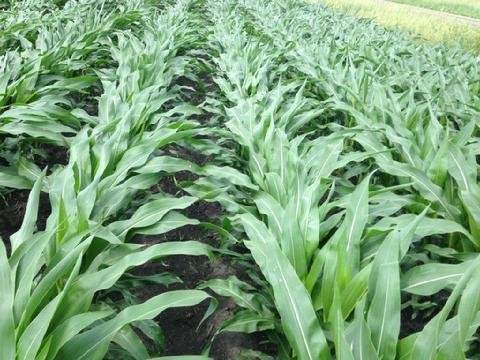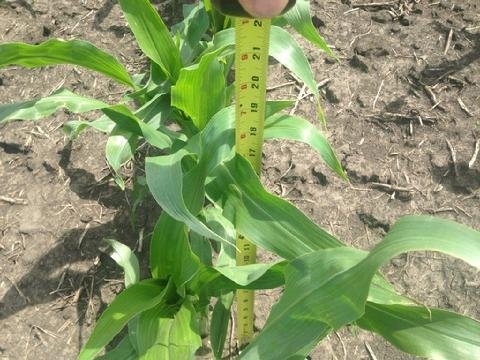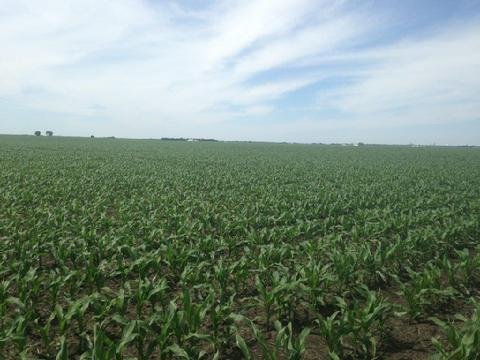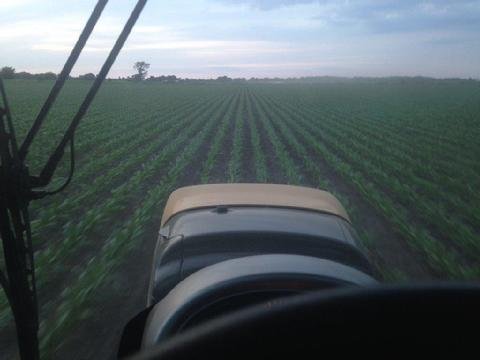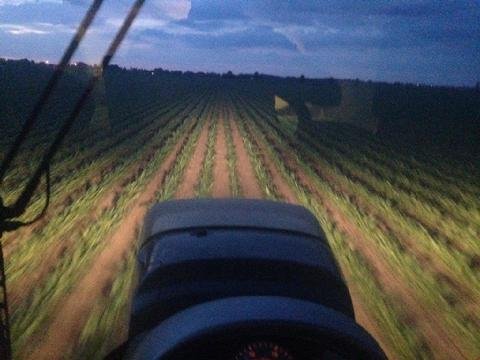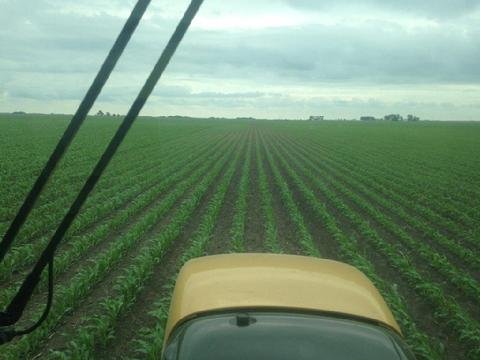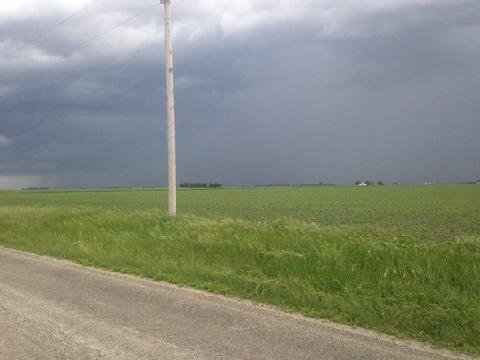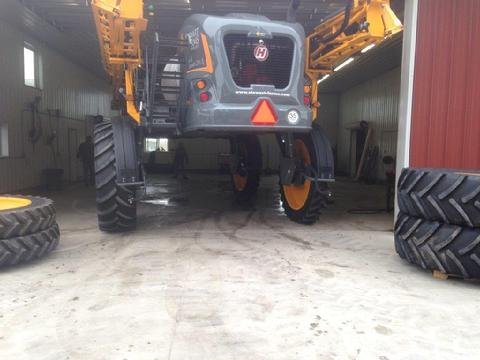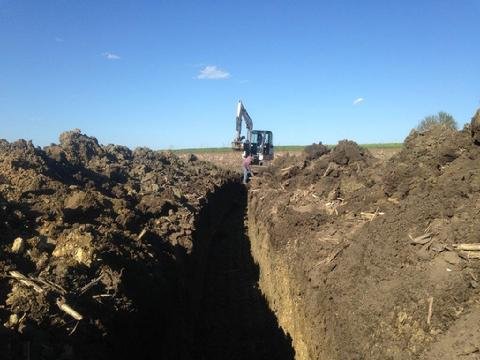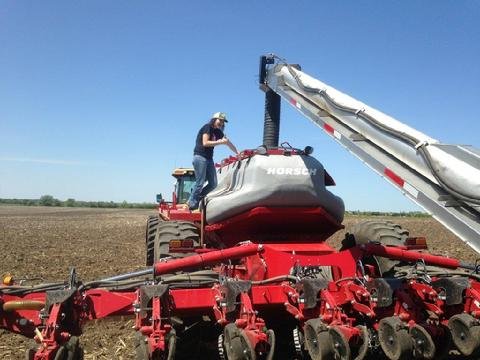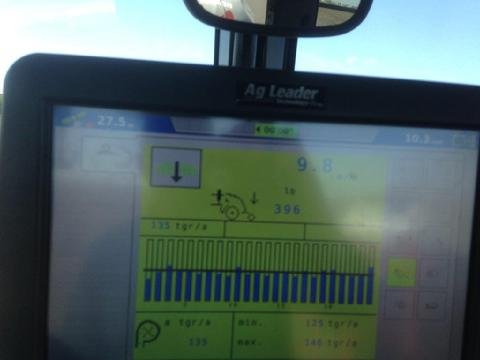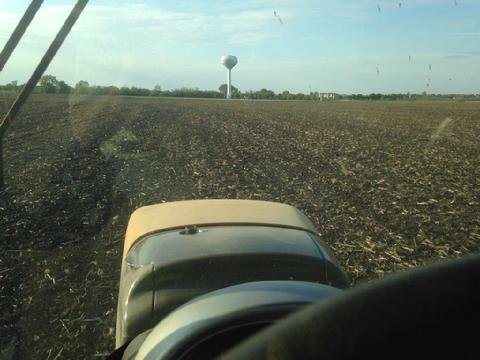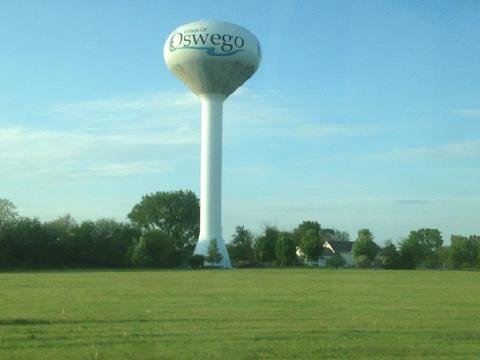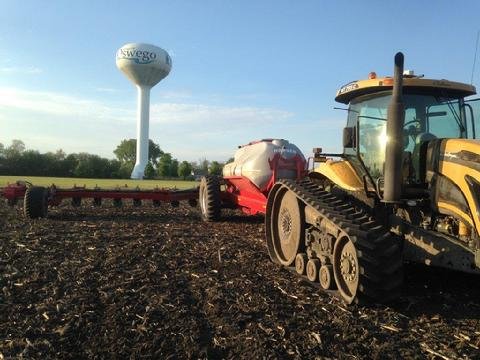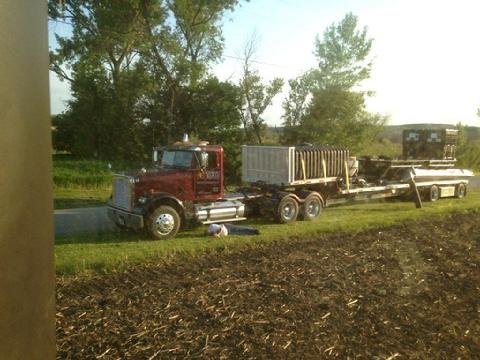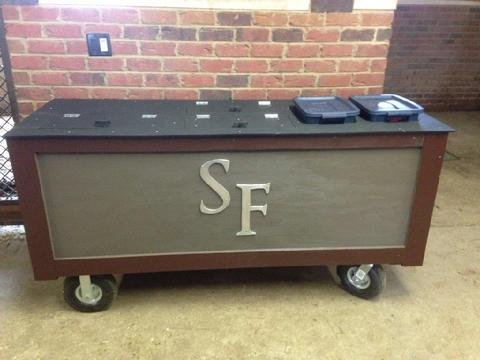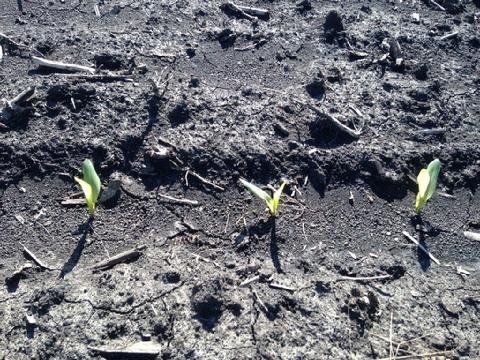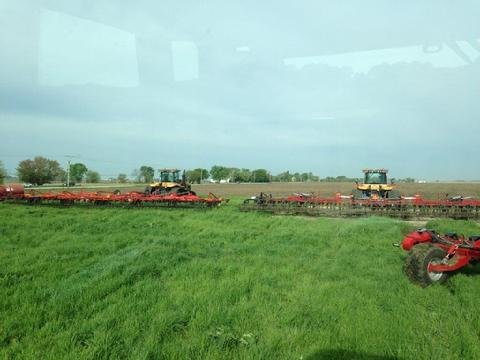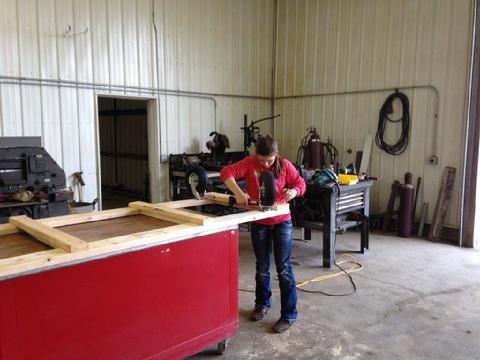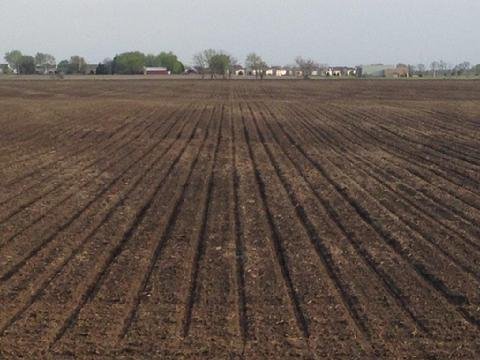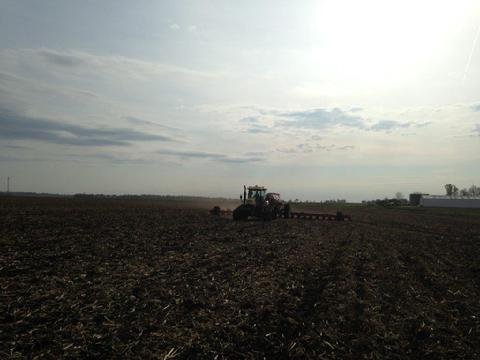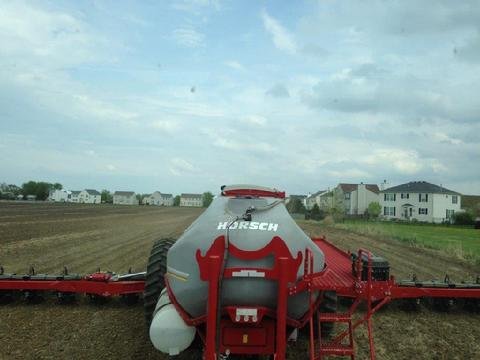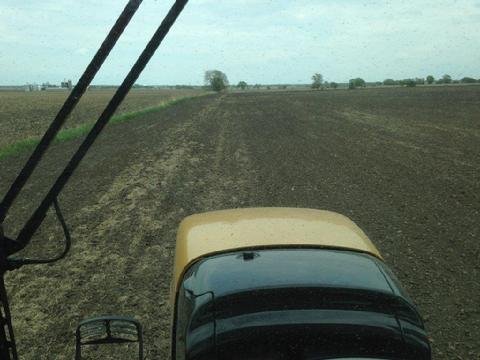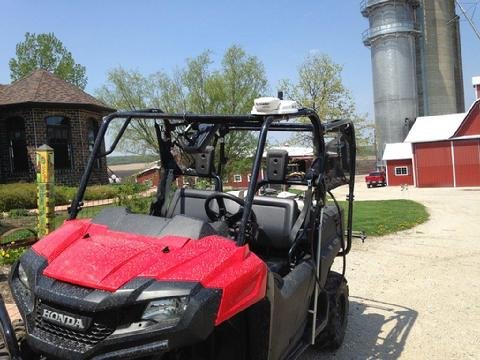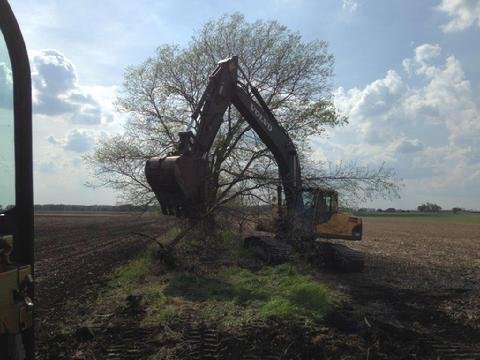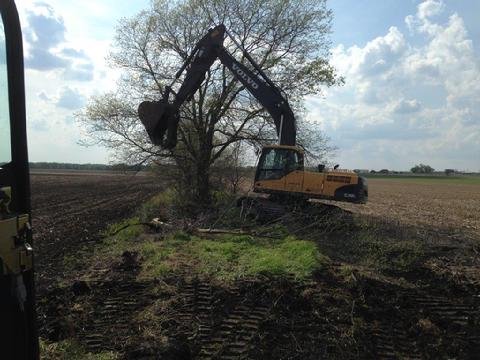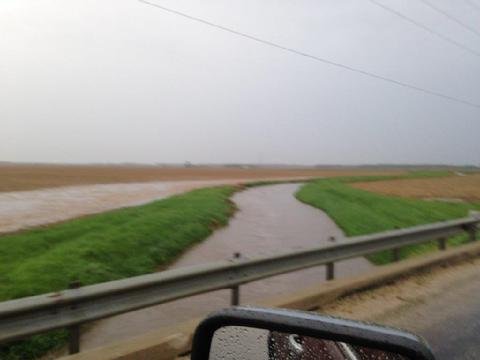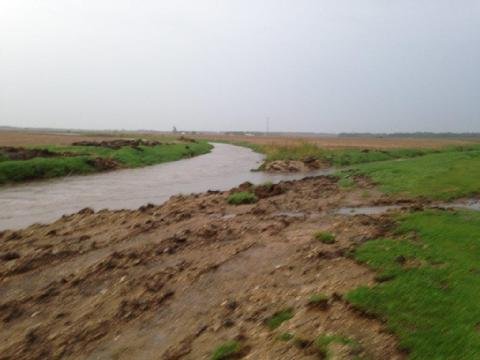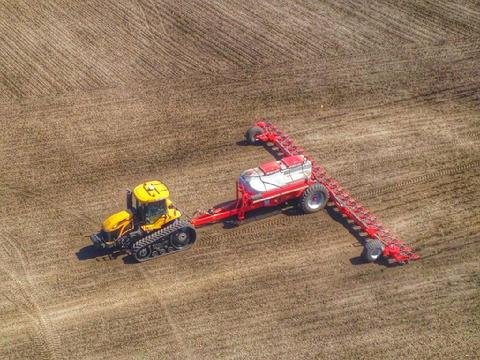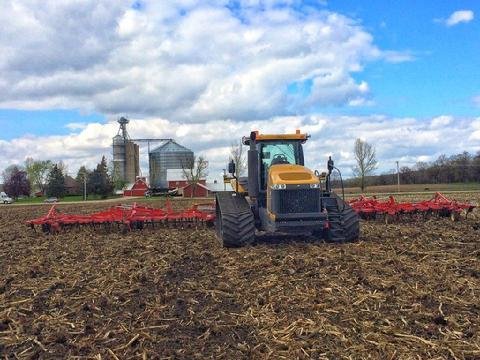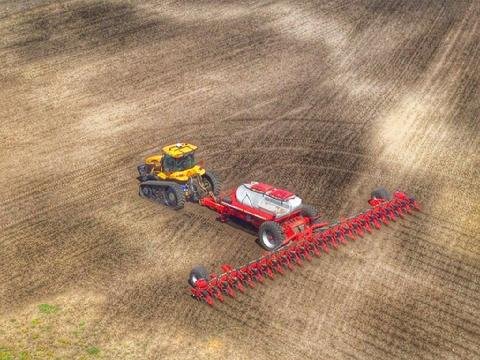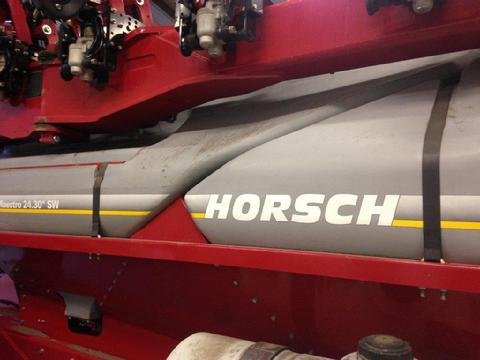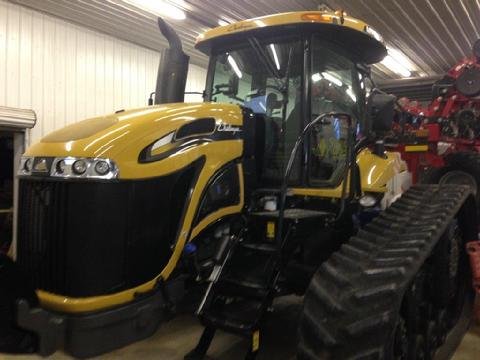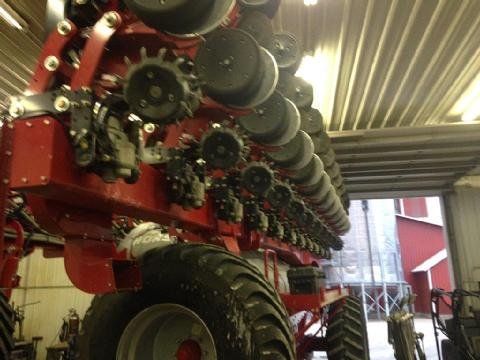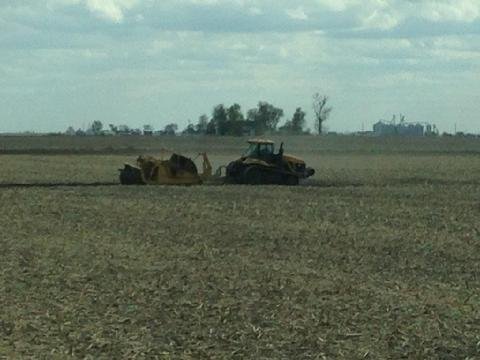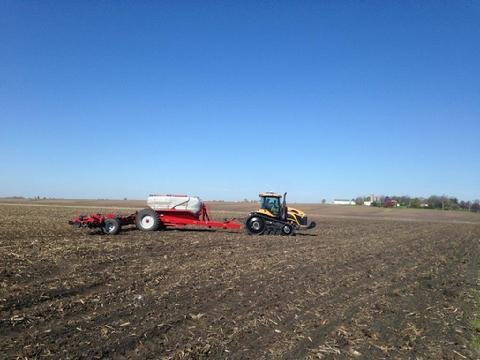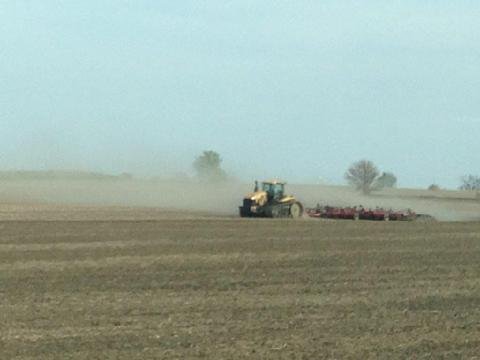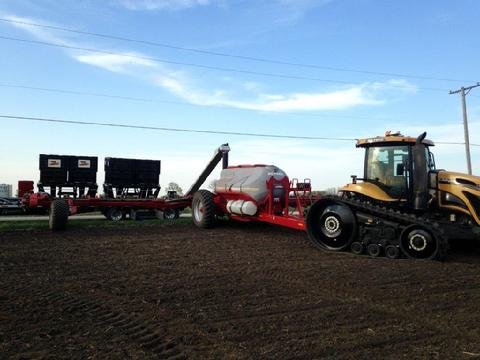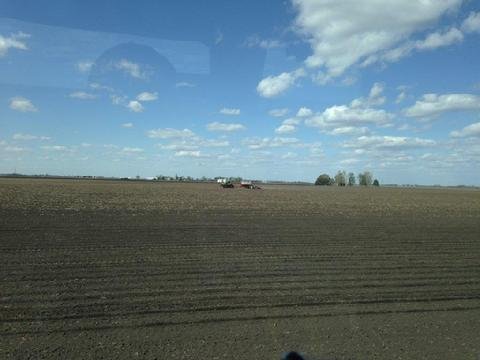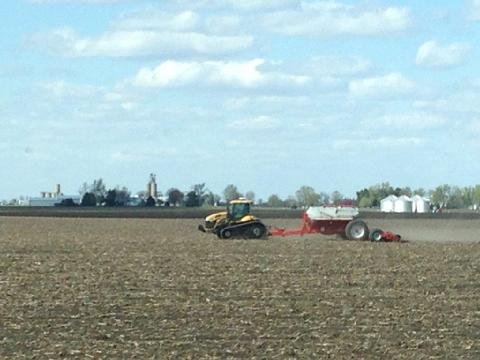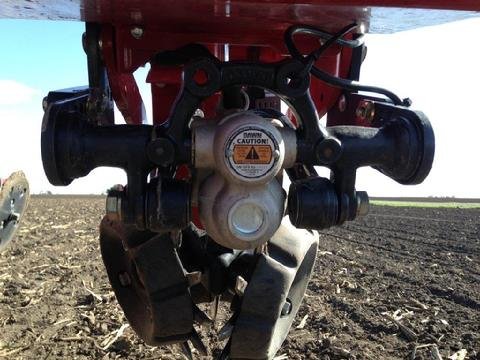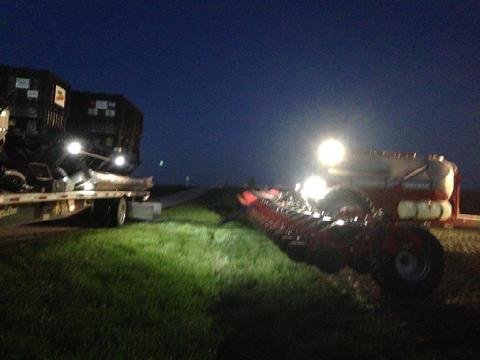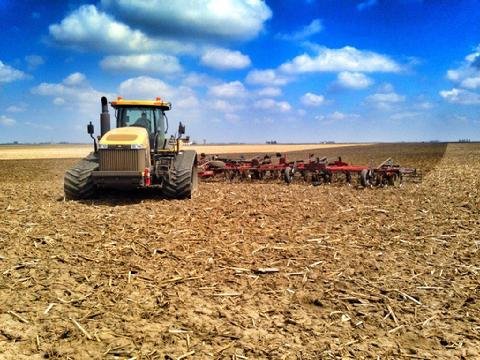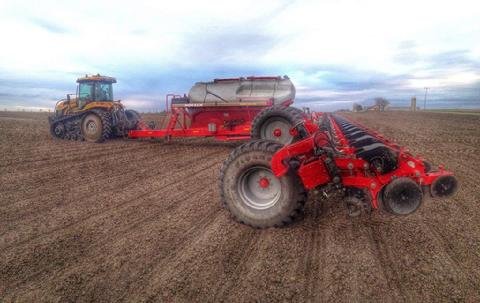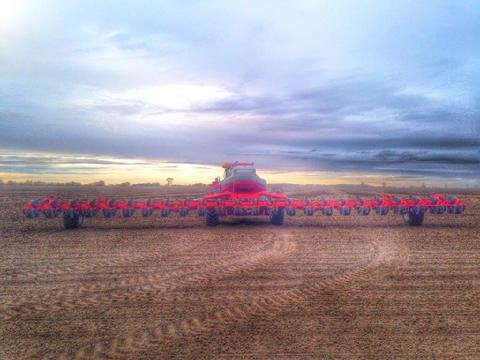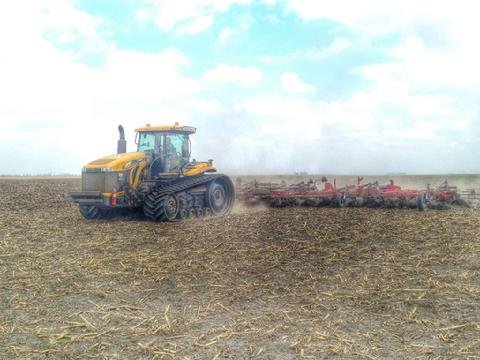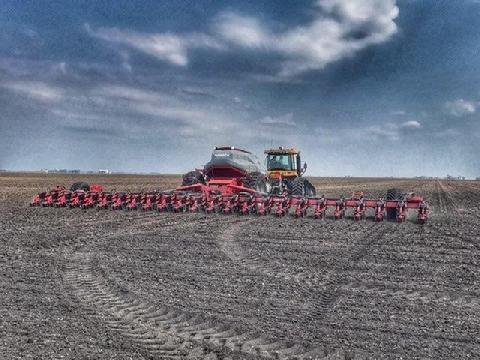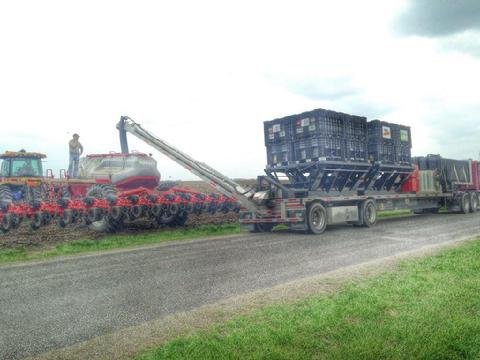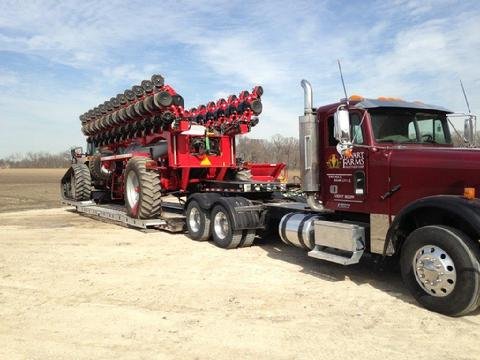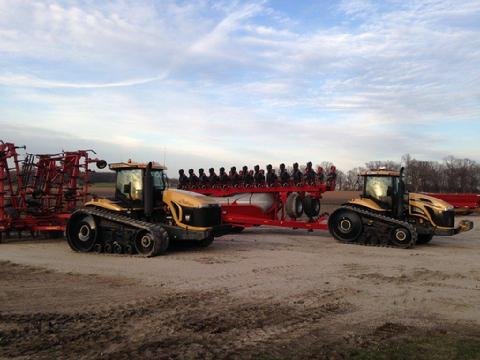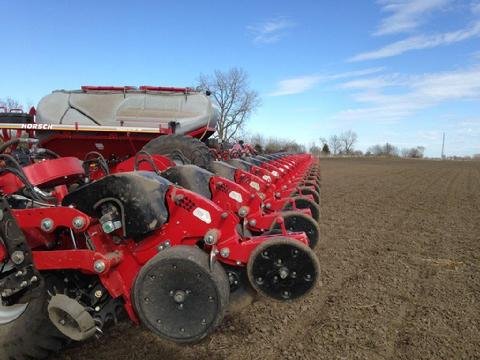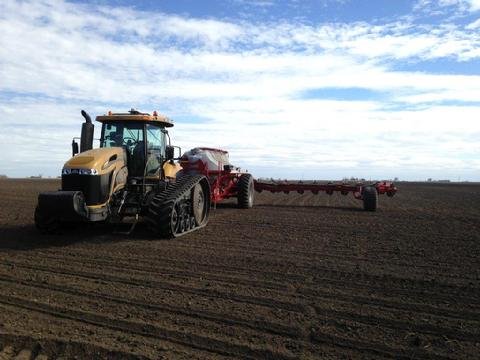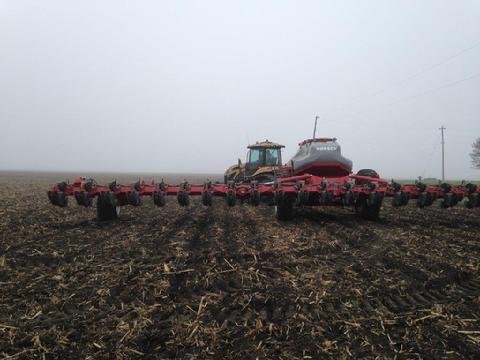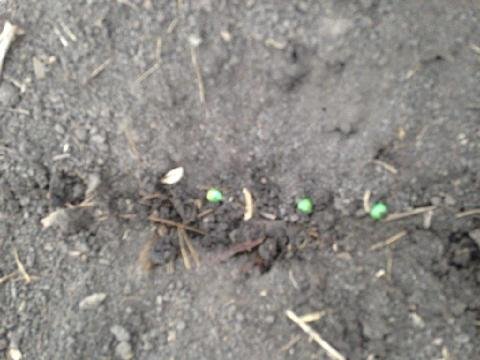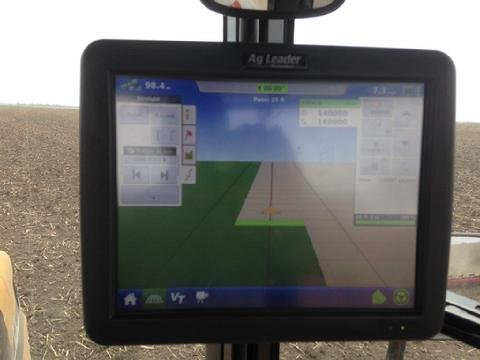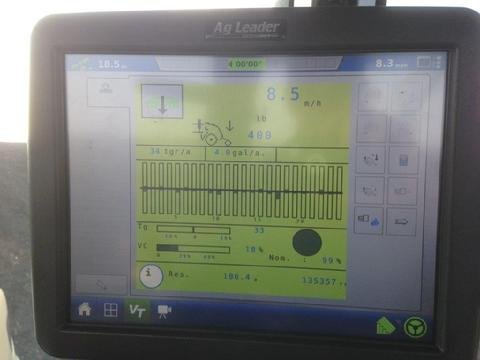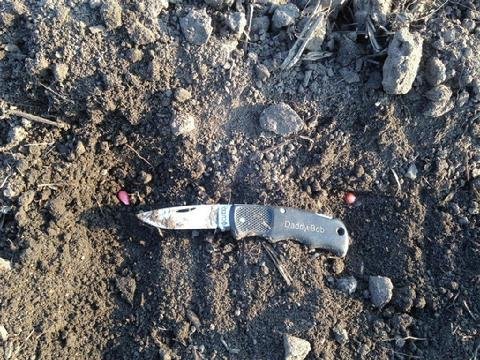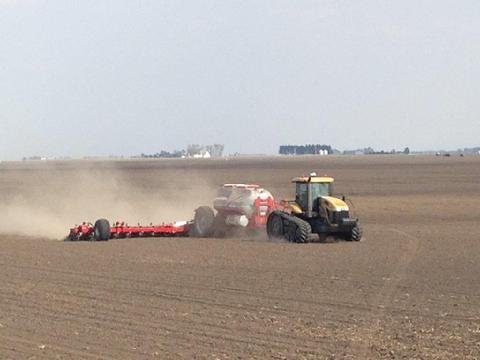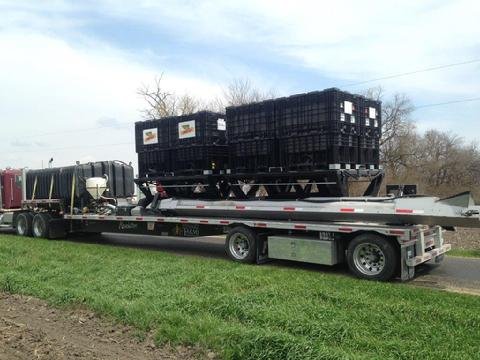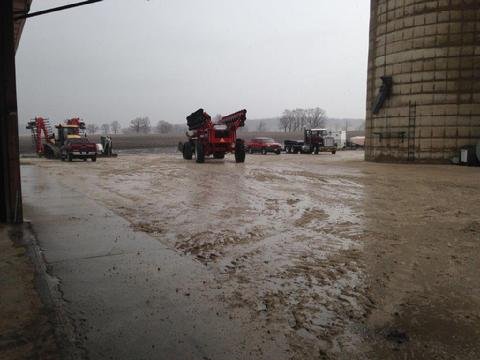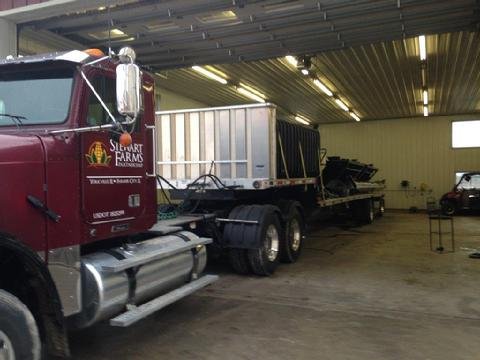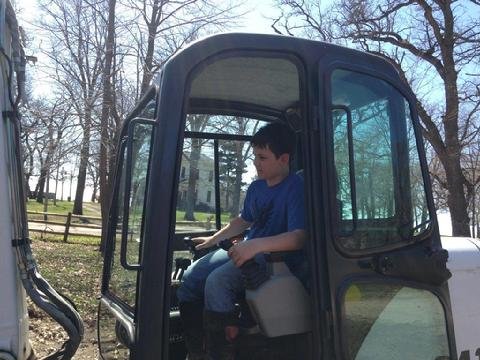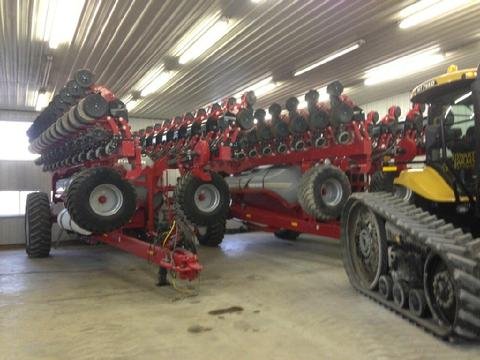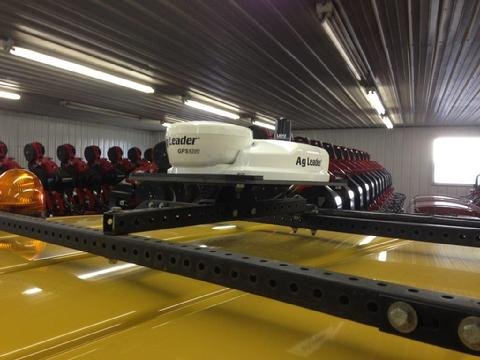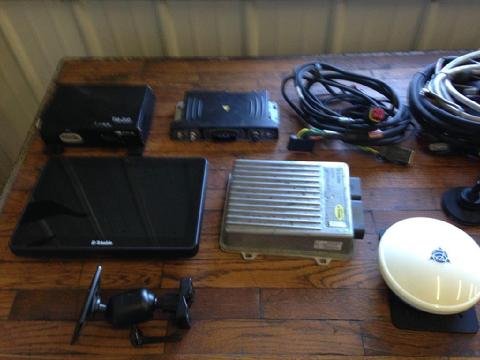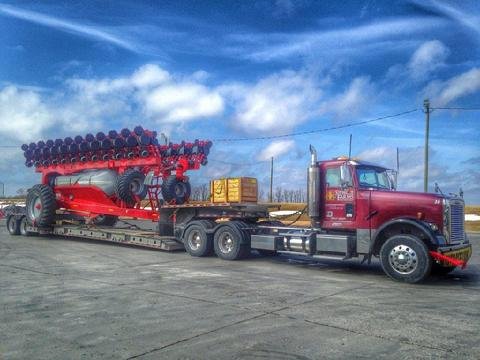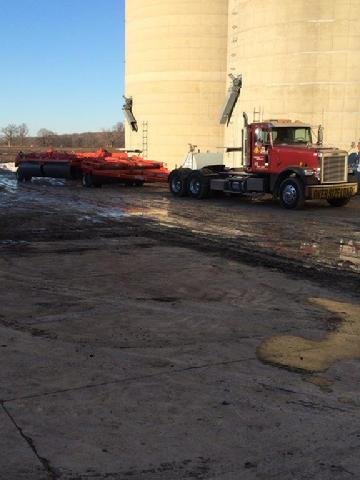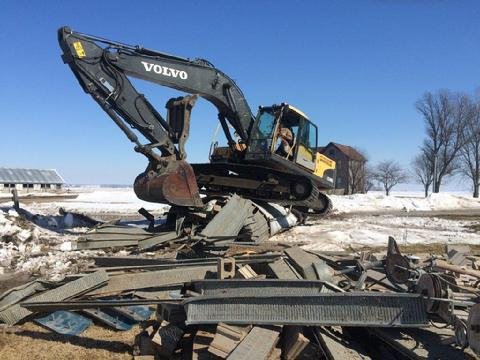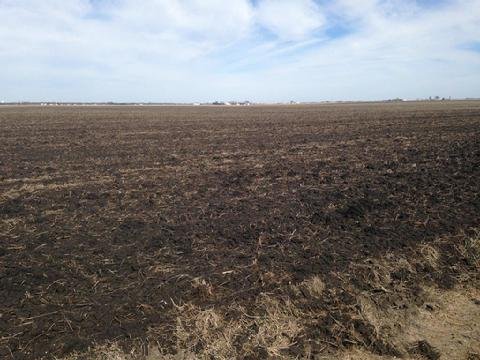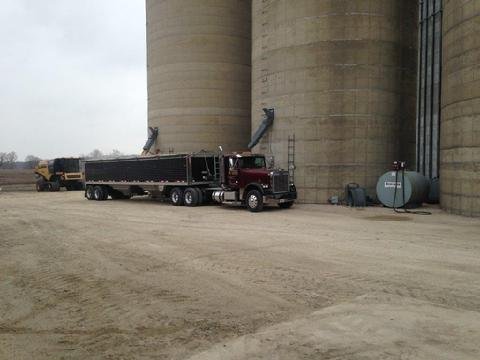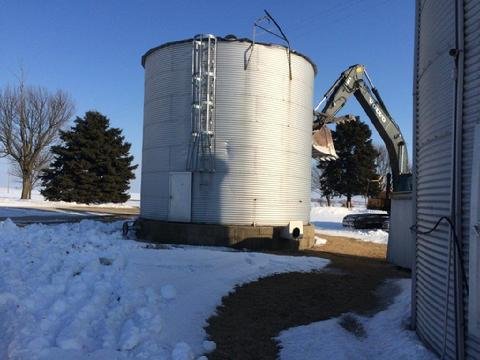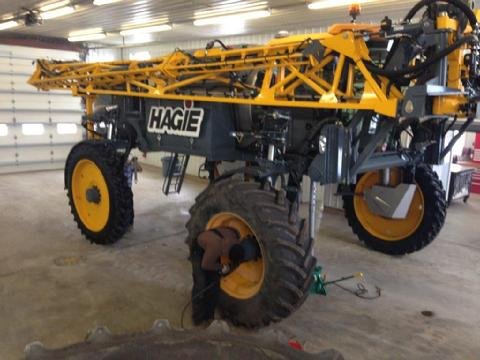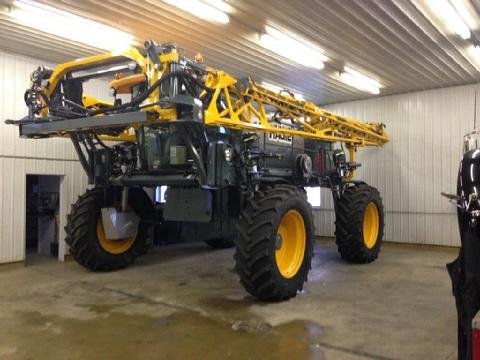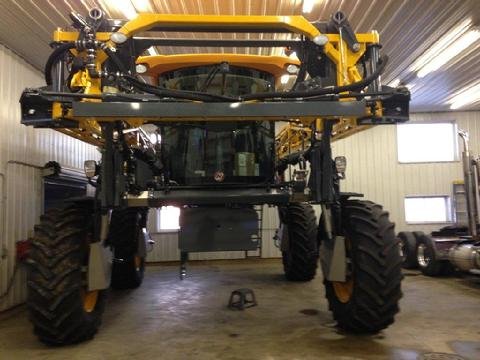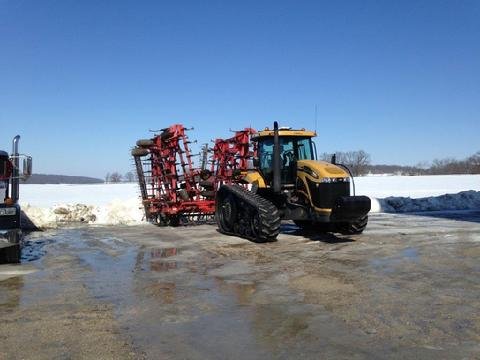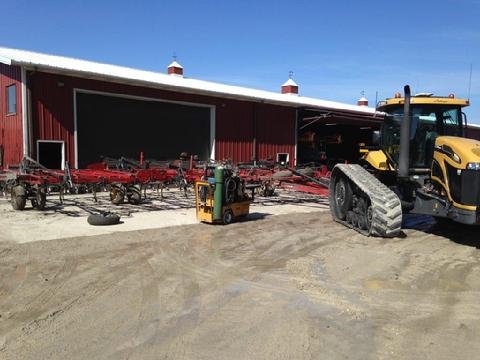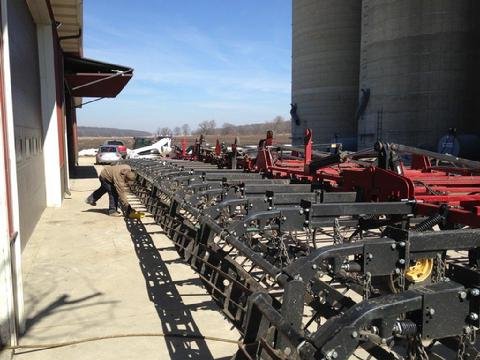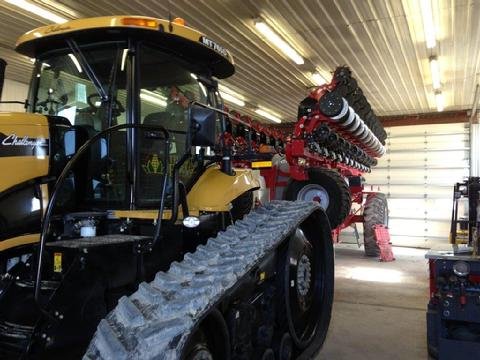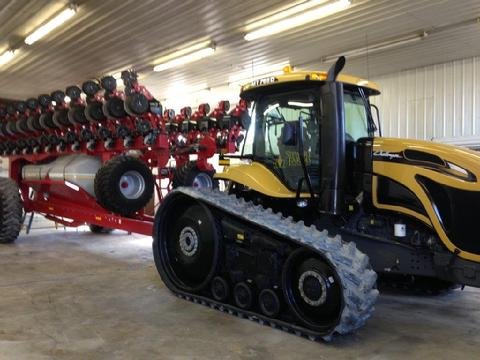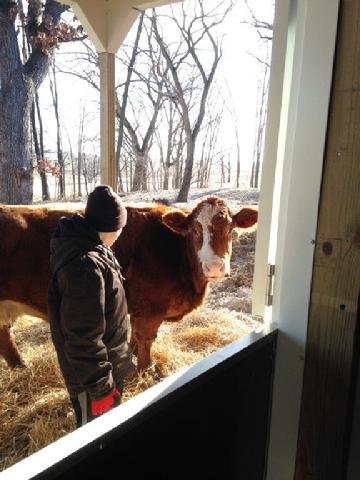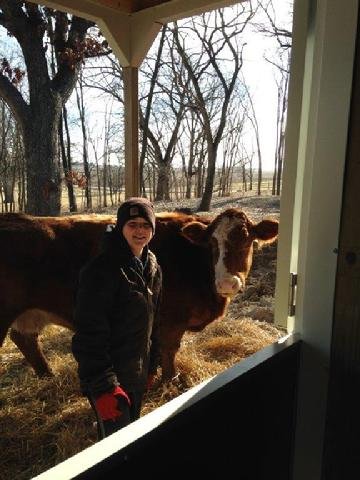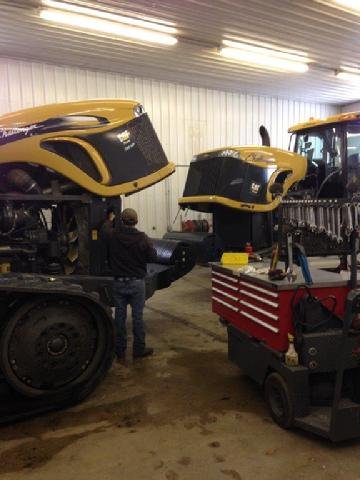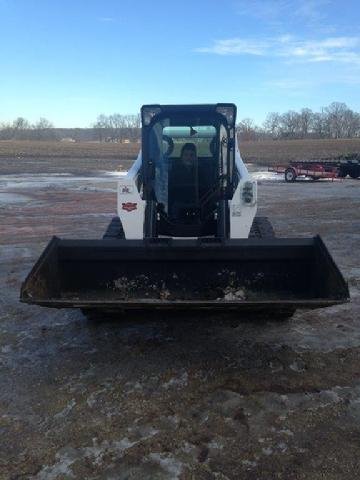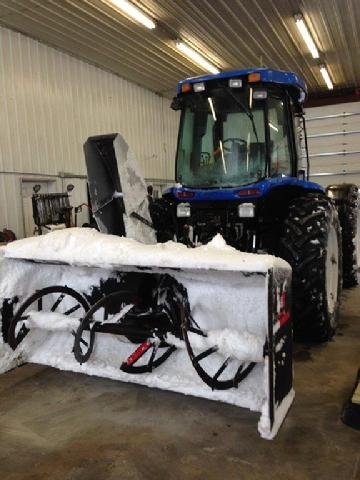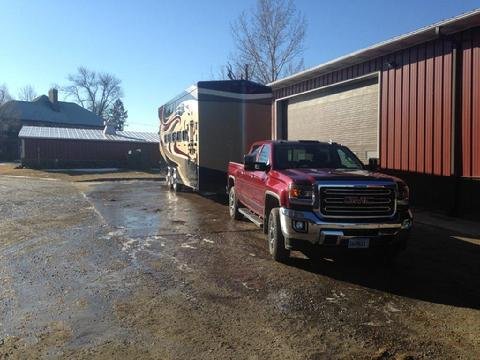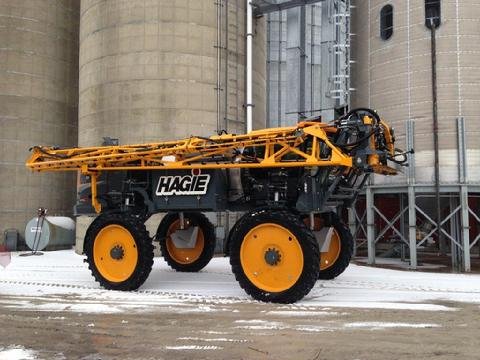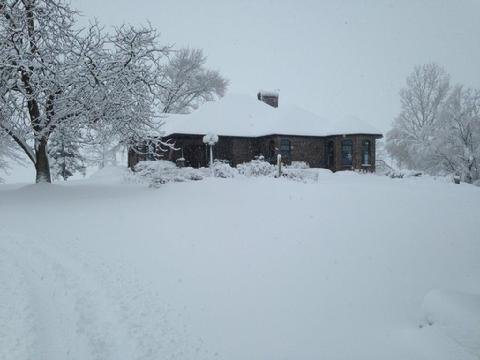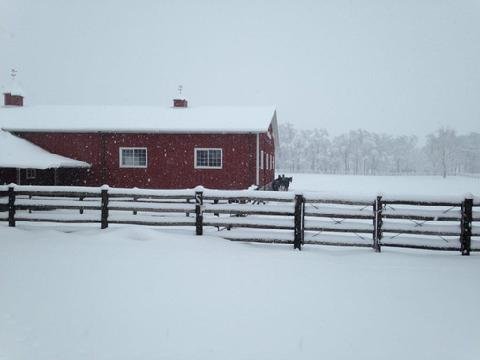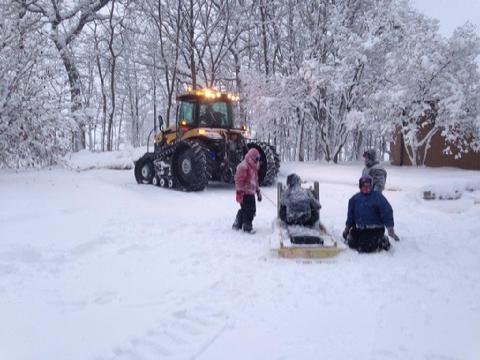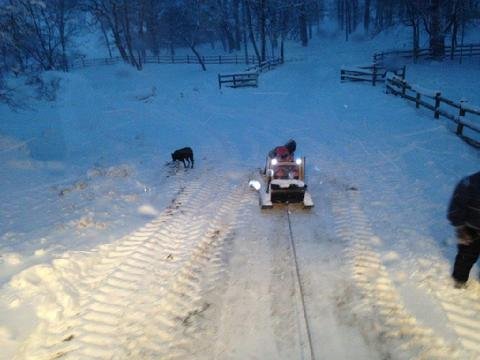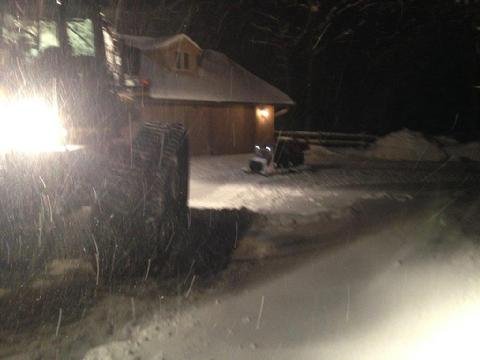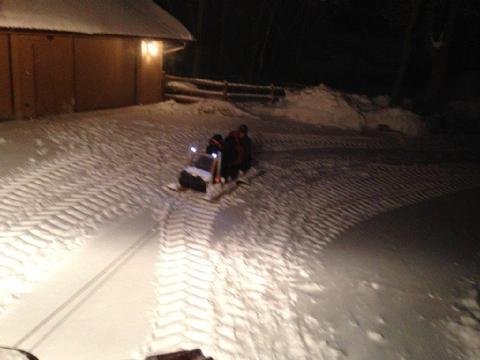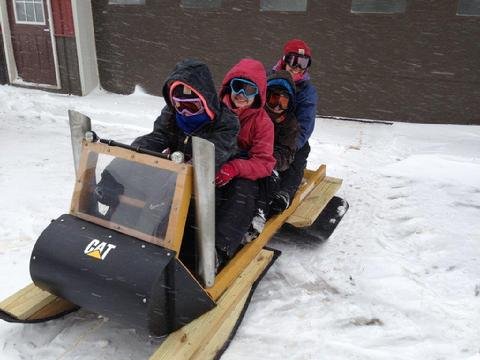2015 Crop Year
Harvest Season
December 1st
With harvest and tillage work wrapped up, we were able to get to some building site maintenance projects. We trimmed trees and cleaned out brush on the Murley Wheeler farm this week. The excavator with the hydraulic thumb makes for quick work on these projects. Below are some pictures of the clean-up efforts
Week Ending November 22
We were able to finish up tillage work this week. Our perfect fall weather has left us now. We finished up tillage in wetter conditions than we like but we were able to get done which is a blessing.
Week Ending November 15
We finished up our last patch of soybeans early this week, officially completing our 2015 harvest. We were fortunate to get done ahead of some heavy rains and strong winds that hit our area in the middle of the week.
We were able to get back to some limestone spreading and tillage work this week. If the weather holds up we should finish those operations this coming week.
We also started some drainage ditch maintenance projects and harvest machinery cleanup tasks this week.
Below are some pictures from this week's work including Keith and Kristine learning how to run the tillage tractors. They did well.
Week Ending November 8th
We finished corn harvest for the season on Thursday of this week. Corn yields remained very good with most fields averaging 220 to 250 bushels per acre. Moisture levels remained good at 16 to 18%. We were glad to see the moisture levels remain above 15% since any lower levels would have resulted in excessive head shelling and field losses.
Most of the corn remained standing well in the field despite the rain and heavy winds over the last week. We were happy to get it out before it started to go down.
Several of the fields we finished up on this week are near subdivisions in the Plainfield area. One night at about 9:30 we had a police officer stop and tell us there was a noise complaint called in on our machines that were harvesting. We only had 20 minutes left to finish the field which we did. This incident highlights some of the challenges with farming in an urban area. Many people do not have any patience for farm machinery, noise, dust, or other issues involved with food production.
Both the people and machinery are starting to get worn down from the long harvest season but the end is in sight. We have about 60 acres of soybeans left that we skipped over when the rains started 1.5 weeks ago. Hopefully, we will knock those out early this week.
Limestone spreading and tillage work started back up this week after being delayed by wet conditions.
Below are some pictures from this week including one of Keith and Karoline getting involved with some combine maintenance and Keith and Lucy (the dog) sleeping in the combine on the last cornfield.
Week Ending November 1
Rain and wet conditions shut down the soybean harvest with only about 80 acres to go. We switched to corn and made some good progress. Early corn yields in the Yorkville area have been good. We are seeing wide variations within the fields as a result of the wet spring and dry August. The yield monitor will swing from less than 200 to 280 bushels per acre in a 1/2 mile pass.
Tillage work and limestone spreading also came to a halt midweek with the heavy rains.
Below are some pictures from this week.
Week Ending October 25th
Soybean harvest continues. Yields have remained very good. Our challenge now is the moisture content which has been falling too low with the warm dry weather. Soybeans are now down to 9% in the field. We could wait for rain which would add moisture but this is risky since good dry bean cutting days may become scarce if the weather pattern changes. So we keep going.
Two other big challenges we have had lately are rocks and dirt clods. We did not use our roller behind the planter on the last 1500 acres of soybeans this spring since we felt it might do more harm than good in the wet conditions. The lack of the roller has made the last 1500 acres of soybean harvest tough since we have been battling rocks and dirt coming into the heads. The roller made a huge difference. Earlier fields with similar rock populations were not an issue. Later fields that did not have the roller have been a major challenge. Our daily field productivity has been cut significantly as we battle the rocks.
Needless to say, we are ready to be done with soybeans for the year. We have harvested more beans this year than we ever have. At least yields have been very good.
Week Ending October 18th
We started on soybeans in the north this week. Yields have been very good at 70 to 80 bushels per acre. Moisture levels are dry at 12 to 14%.
The tillage crew finished Farmer City and got moved home to start there.
Week Ending October 10
We finished soybean harvest in the Farmer City area this week and started moving machinery home to start harvest there. Soybean yields remain very good. Some fields averaged over 90 bushels per acre which are the best field averages we have ever seen. The stems remained green to the end which made for some slow going and hard work for the machines. Moisture levels stayed in the range of 11 to 14%. Overall moisture content averaged around 12.8% which is right on the 13% target.
We had a few machinery issues this week including some gearbox and auger breakdowns in the 595 combine. We were able to get it repaired fairly quickly but it did slow us down.
All the limestone we intended to spread in Farmer City got hauled and spread this week.
The tillage crew managed to stay close behind the combines. They are down to about 400 acres to go to finish in Farmer City and get moved home.
The combines are moved home to Yorkville where we hope to start on soybeans Monday.
Week Ending October 3
We started harvesting soybeans in Farmer City this week. At the beginning of the week, the early planted beans were still fairly wet at 15%. They dried down throughout the week and were 11-12% by the end of the week.
We had several machinery issues during the week including some bearings and pulley problems on the combines. This slowed down our progress early in the week.
Soybean yields have been excellent so far. Field averages have been over 85 bushels per acre which are some of the highest we have ever seen. Pockets in the fields are hitting over 100 bushels per acre. These yield levels are somewhat surprising given all the excess rain we had in June. Some pockets in the fields were lost due to flooding yet the overall field averages remain excellent.
The tillage crew made excellent progress this week. We started running both rippers this week. By the end of the week, they had over 2000 acres finished and are nearly caught up with the combines. The rippers are doing an excellent job in the dry field conditions.
We tried out the Falcon soil testing machine this week. The machine automates the process of pulling soil samples and mixing the cores for one composite sample for every 2.5-acre grid in the field. The machine bags the bar code-labeled samples so they can be sent to the soil lab for analysis. We will use the test results to spread limestone and fertilizer.
Below are some pictures from the week including some drone videos.
Week Ending September 26th
We had a good week of corn harvesting in the Farmer City area. Yields remained very good with field averages between 230 and 260 bushels per acre. Moisture levels continued to drop through the week with the warm weather. Moisture levels ranged from 18 to 22%.
We took out our commercial corn test area for our seed corn production contract. Part of our seed corn payments are based on how commercial corn did in the area. Our test area made 255 bushels per acre which is very good.
The tillage crew got started this week on working down ground. We are again using 22 ft CaseIH 875 rippers.
Brad's family came to visit us on Saturday. Kelli ran a grain cart and the kids road along with us. They were very excited to see the combine "eat" the corn. And they were excited to eat my stash of cookies in the combine.
We finished up corn harvest by 8 pm Saturday night. We will be switching over to soybeans next week.
Below are some pictures from the week.
Week Ending September 20th
Corn harvest started for us this week in the Farmer City area. Moisture levels are 21-22%. Yields have been good so far at over 200 bushels per acre. Yields across the field are highly variable across the individual fields with the variability in where water sat after the heavy rains in June.
We are running a Lexion 780 and a Lexion 595 in corn. Both have 16-row heads.
Below are some photos of the early harvest progress.
Spring & Summer Field Work
Week Ending September 19
Keith's baby calves were born this week. Our cattle herd doubled from 2 to 4 head. We were glad to see healthy babies born.
Week Ending September 12
We officially finished the hopper cone project this week. We ran corn through the system and everything works well.
We got back to getting machines ready for harvest.
Week Ending August 29
We installed the conveyor under the new hoppers this week. The 10,000 bushel-per-hour drag conveyor runs under all three silos. Making the connections and slide gates between the hopper cones and the conveyor was the difficult part of the work.
Week Ending August 22
Work continued on the hopper cone project this week at the farm. We also changed all the tractors back to wide tracks for fall.
Bob, Sarah, and the kids got away for a quick trip to the Smoky Mountains in Tennessee before school started. White water rafting on the Pigeon River was a highlight of the trip.
Week Ending August 15
We continue to make good progress on the hopper bottom project in the silos. We now have all of the hoppers erected in all three of the silos. We should finish welding all of the seams in the sheeting this coming week. The full project has about 1 mile of solid welding. We are happy to be able to see the end in sight.
We have Bergen back from his summer internship with John Deere this week. We are glad to have his help again on the silo project.
We had a couple of nice rain showers this week. The recent run-up in temperatures into the 90s has put some stress on the crops but our corn and soybeans continue to look good overall.
Below are some pictures from the week.
Week Ending August 8
We held our annual appreciation dinner for the people we do business with this week. We had a great evening with good food and nice weather. We had over 100 people at the event this year. We are very grateful for all of the land owners, suppliers, customers, and other folks that make our farming operation successful.
Week Ending August 1
This week is the week before our annual farm appreciation dinner which means we spent most of it cleaning up the farm and equipment for the party.
I spoke at the InfoAg conference in St. Louis this week about our farm's experience with GPS technology. Below is a link to the presentation. The conference was well attended with over 1500 people there.
We tried something new on our soybeans. We side-dressed 32% nitrogen on the soybeans to see what the impact of late-season application of nitrogen will do to yield. We tried it on about 40 acres. Stay tuned this fall to see if it was worthwhile.
We also finished spraying fungicide on corn this week. It is good to have that job done and the sprayer put away for the year.
Week Ending July 25
Brad and Phil were busy spraying fungicide on corn this week. They finished in Farmer City and got moved back home to start there.
Work continues on the silo hopper bottom project. Another warm week for welding and erecting heavy steel.
Week Ending July 18
Kristine competed this week in the National High School Finals Rodeo in Rock Springs, Wyoming. She placed 21 out of 185 in the pole bending competition. She placed 14 out of 50 in the queen competition. W are proud of her accomplishments in rodeo this year.
Week Ending July 11th
We tried side-dressing nitrogen on some of our soybeans this week with the Hagie applicator. We will see if this pays at harvest.
Kristine (17) won the state competition to become the Illinois High School Rodeo Queen. She left this week to compete at the National High School Finals Rodeo in Rock Springs, Wyoming. She will be competing in the queen contest as well as pole bending which she also qualified for at the state level. The queen competition is very intense and includes public speaking, an interview, and horse riding skills. Good luck to Kristine in Wyoming.
We started some of the serious steel fabrication on the silo hopper project this week. Each silo gets two rings of 6-inch square tubing installed to hold up the new hopper floors. We have set up an electric winch and a man lift inside the silos to lift and secure the 300+lb pieces.
Below are some pictures of the work in progress.
Week Ending July 4th
The excessive rains in June have taken their toll on many parts of Illinois. One of the areas that has been hit hard is Lewistown, Illinois where Sarah's parents farm. Much of their farm is in the Illinois River bottom. Drain water must be pumped up over the levee into the Illinois River. Most of the time their pumps keep up with the water draining out of the fields. However, recent heavy rains have caused the pumps to fall behind and they are at risk of losing a good portion of their crop to flooding. I went down to their farm this week to deliver a tractor-driven pump that might help get the water levels down faster. Some pictures of the pumping and water levels are below.
Excessive rains have started to hurt low areas in some of our fields. However, we are better off than most areas of the state.
We did manage to replant some of the drowned-out areas in the beans this week. Some spots were still too wet to replant. As shown by the look of my co-pilot below, it is probably time to give up on planting anymore this year.
Week Ending June 27th
We started some of the serious work on the silo floor project this week. In order to get the large steel frame pieces into the silo we have to cut new access doors in each of the silos. The new holes are 32"x62". It took a full day of concrete saw cutting to get the work done. The silo walls are 6 inches thick with steel rebar every 2 inches.
Spraying started on the soybeans in the north this week.
Keith's cow herd of 2 is enjoying the lush summer grass.
Week Ending June 20th
Our first planted corn is now over 6ft tall and looking very good. The early planted beans now have the rows filled in.
We have been working in the shop on rebuilding the corn heads. Idler bearings were changed, knives were set, gearbox oil was changed, and a coat of paint was applied to both heads. They should be ready for harvest.
The second load of steel for the hopper bottom project arrived this week. We have about 100,000 pounds of steel to fabricate into the hopper for the three silos.
Week Ending June 13th
Brad started spraying the first pass of herbicide on the soybeans to the south. The corn and soybeans in Farmer City look very good. That area has missed some of the heavy rains that have hit other areas.
We started cleaning up planters and other spring equipment this week.
Week Ending June 6th
Corn side-dressing got started in the north. The corn continues to look good both south and north.
Brad continues to spray both corn in the north for weeds.
Karoline and Keith helped me clean out the silos in preparation for our next big summer project which is installing hopper bottom floors in the silos. The steel arrived this week so we are set to get started when we get caught up in the fields.
Karoline learned how to run the skid steer. She decided it was better to be the one running the loader than the one running the shovel.
Keith and I planted another round of sweet corn with our "high-tech" manual drive planter.
We replanted some spots in the beans that were too wet to get into earlier in the spring.
See photos of the week below.
Week Ending May 30th
We were able to get started side-dressing nitrogen on the corn this week in Farmer City. We are applying liquid 28% nitrogen at a rate of about 35 gallons per acre. We are doing some variable rate nitrogen based on recommendations from Pioneer's Encirca program. That program takes into account our yield goals, previous crop, weather, soil types, and other factors to help us determine the specific nitrogen needs for the corn.
The early planted corn is almost knee-high and looking very good. We are able to run the applicator at 10 mph. We are using a FAST 60ft applicator, running down the same traffic pattern as our earlier passes this spring. The GPS steering is keeping it on the row.
We also continue to haul last year's corn to market. Much of it is going to the Illinois River market this spring.
Below are some pictures from the week.
Week Ending May 23
We finished planting soybeans this week. We let some of our last fields dry out as long as we could this week, waiting until Saturday before the expected rain on Sunday to finish. The forecast was correct and we were thankful to get the beans in ahead of the rains. Field conditions were still on the wet side but the beans are done.
While waiting on the fields to dry down we kept busy fixing tile lines and repairing waterways.
The spraying crew was able to get all the corn sprayed in Farmer City and get moved back home. Earlier in the week the floatation tires on the sprayer got changed out to the row crop tires for post spraying.
Daughter Kristine (17) got to try planting soybeans this week. She did well but did find out that turning on the ends does take some practice.
Below are some pictures from the week including the tired-out seed tender driver catching a nap on the last load of the year. Yes, he is OK.
Week Ending May 16
We were able to get back in and plant most of the remaining soybeans around Plainfield this week between the rain showers.
The first planted corn around the home is up now and looking good. It could use some more heat and sunshine but at least it is out of the ground.
Karoline and I worked on some storage boxes for the horse barn over the weekend.
Week Ending May 10
We were able to get back into the fields this week to finish the corn between the rain showers. We still have some soybeans to plant but we are thankful for being done with the corn ahead of the heavy rains that hit late in the week. Up to 2 inches of rain fell in less than 1/2 an hour in some locations. The pictures below show the swollen creeks. Most of the water went down by the next day.
We went back to some tree line cleanup projects this week while we were waiting on conditions to dry out.
Below are some pictures from the week.
Week Ending May 3rd
Field conditions remained cool and damp until midweek. We were able to start planting both corn and soybeans around Yorkville on May April 29th. We had a good stretch of working through Saturday when we were rained out again. We were able to get most of the corn by the weekend.
Below are some pictures from the week.
Week Ending April 26th
We were able to get back into the fields by Wednesday of this week. Soil conditions were good and we were able to get done with both commercial corn and soybeans in the Farmer City area by Friday evening. We were fortunate to get things wrapped up since the rains moved into the area by Friday night.
We started moving machines north to Yorkville so we can start planting that direction next week.
Weather conditions have remained cool all week which has raised some concerns about the corn and soybeans that have been planted already. Forecasts for warmer temperatures for next week encouraged us to keep planting. Dry field conditions and the desire to get moved home before rains set in kept us planting as well.
Hopefully, our timing is good as we get moved home. Soil temperatures there are just getting optimal for planting.
Below are some pictures and a video from this week’s work.
Week Ending April 19
We started planting on Wednesday, April 15th. We started planting both corn and soybeans on day one. We are running one of the planters in soybeans and the other one in corn. We decided to try this approach instead of running them together in the same crop to save time in switching them between crops, make sure we got out beans in early, and save any inefficiencies of trying to run multiple machines in the same field. It does make tendering both planters a challenge but our tender driver is up to the challenge.
We are spraying a pre-plant herbicide with liquid nitrogen ahead of the field cultivator for corn. The soybeans are also getting a pre-plant herbicide. Brad had a good first week of spraying and got all the Farmer City ground sprayed between Tuesday night and Saturday.
We are using a roller on all of our soybeans after the planter. We find that the roller gives us a better seed bed, knocks down any root balls, and allows our grain heads to do a better job of harvesting the soybeans in the fall.
We are following a 60ft controlled traffic pattern using pre-set A-B lines and RTK GPS. Each pass from the 120ft sprayer, 60ft cultivator, 60ft planter, and 60ft roller all follow the same wheel tracks. This significantly reduces the area of the field that is impacted by wheel tracks and ensures that a wheel or track is never on the plant row.
We made good planting progress in our first half week of planting, getting in 1200 acres of corn and 1100 acres of beans. The field conditions were very good.
Rains came in on Sunday, April 19 giving our crew a well-deserved break.
Below are some pictures and videos from the week.
Week Ending April 12
More waiting on the fields to dry out and the temperatures to warm up this week. We kept busy continuing to get machinery ready for fieldwork. Hoping to start planting next week.
Winter and Early Spring Activities
Week Ending April 4
Field conditions were dry enough this week that we were able to get back to some waterway maintenance and tiling work. We installed a 12-inch tile main on the home farm, replacing an older tile.
We continued to get the planters ready to go. We will be running two Horsch 24-row/30-inch planters this year. We will likely run one in corn and one in soybeans. Both will be controlled with an AgLeader Integra monitor. We are looking forward to hitting the fields with them soon.
By the end of the week, it was tempting to start fieldwork. However, the forecast for wet/cool conditions held us back from starting.
Week Ending March 29
This week started off with a cross-country tour of potential colleges for our daughter Kristine. She is interested in studying agronomy. We visited Texas A&M, Kansas State, and Iowa State. We put on about 3500 miles in 4 days. The visits went well. Hoping to get her in for an official visit at our college home, the University of Illinois later this spring.
Work on the machinery continued this week. We replaced the bearing assembly on the rear drive axle on two of the tractors. Previous oil samples had shown some wear and it was time to replace the bearings.
We are switching some of our GPS systems on the machines to AgLeader. We were able to get the systems installed on perform the necessary in-field calibrations now that the fields are drying off.
We traded one of our CaseIH planters for another Horsch planter this week. The Horsch planter is a used machine out of Canada. It matches the Horsch we bought last year. This machine also has electric drives, hydraulic down pressure, and liquid fertilizer. We were happy with the performance of our Horsch last year and decided to run another one.
Week Ending March 22
We had some more good early spring weather this week. We continue to get machinery ready for spring work, haul grain, and work on cleaning up building sites with the excavator. The frost has now totally left so we are able to do some maintenance work on the drainage ditches including tree removal and ditch straightening.
A question was asked recently regarding our website that is worth sharing. Someone asked who maintained our site and how much it costs. I (Bob Stewart) maintain the website myself. I am also one of the partners doing the day-to-day farm work and management of the farm. We do not have web site developer. I spend an hour or so each week updating the site. We pay an internet service provider (Network Solutions) $400 per year to host our site. This is the only cash expense we have for our site. The site has been a very low-cost way to share information about our farming operation with other people.
Week Ending March 15th
Spring temperatures finally hit our area this past week. We had several days in the 60s with plenty of sunshine. It was a welcome change from the long cold winter.
With the break in the weather, we have been able to start doing some cleanup projects with the excavator. We took down a couple of grain bins and cleaned off the foundations on one of our farms.
Shop projects this week included getting the field cultivators checked over and ready to go. We also continue to work on the planters and sprayer as spring work approaches. Randy started moving equipment south to Farmer City to get it in position for spring work.
Below are some pictures from this week’s work.
January Projects
We have been staying busy this winter hauling grain to market and working on equipment in the shop. We have now gotten all of the tractors through the shop for their winter maintenance.
Brad upgraded his Hagie sprayer. We traded for an STS16 which is a 1600-gallon tank machine with a 120' boom. We are getting it outfitted with GPS and an injection system.
We upgraded our skid steer to a Bobcat with tracks. We found a used one with only 50 hours on it. The cab and tracks are a good addition which we did not have before.
Keith (11) continues to expand his cow herd. Cow and heifer are bred with a due date of September.
The occasional snows have kept Efren busy plowing out drives for landowners. This last snow on January 31/February 1 dropped about 18 inches of snow. We brought out the snow blower to tackle that one.
The snows have given us the chance to have some wintertime fun with the kids. The Cat / farm-made bob sled was revamped again this winter and got some good use during the last snow days.
Below are some pictures and videos of the recent activities.
